
5 Best Watermakers for Sailboats

Last Updated by
Daniel Wade
June 15, 2022
With the right Watermaker, the ocean becomes an almost immeasurable supply of fresh and clean drinking water to keep you hydrated during your offshore sailing adventures.
Many sailors do spend a lot of their time and money on various parts of the sailboat including the sails, engine, electronics, and generators especially when preparing for long-distance voyages.
While there's absolutely nothing wrong with this, they often overlook one crucial part of general human survival: having an ample supply of fresh drinking water.
Whether you have freshwater drinking tanks on your sailboat or planning to cruise in areas where you can easily access clean drinking water, the hassle involved in having to come to the dock to fill the water tanks can be quite overwhelming.
This is exactly why you need to find the best watermakers for sailboats.
Like many other nautical technologies, watermakers have significantly advanced in the last few decades to become very efficient and more reliable. They're no longer a luxury on your sailboat but a necessity. Better still, watermakers have become relatively affordable and are meant to keep you hydrated as you explore areas that do not have clean and fresh drinking water.
In this article, we'll take a look at how watermaker systems work, highlight its benefits, and highlight the best sailboat watermakers on the market right now. At the end of this read, you should be able to choose the best watermaker for your sailboat.
Table of contents

Benefits of Having a Watermaker on Your Sailboat
The freedom and security that come with having full water tanks on your sailboat are of immense importance, especially if you're cruising in an area where fresh drinking water is hard to come by and quite expensive when you do. As such, having a watermaker aboard your sailboat is no longer a luxury like it used to be in the past. With a steady supply of fresh and clean water, your life on the sailboat will be a lot better. This is because you'll have enough clean water to drink, cook, wash, and shower, which is beneficial if you want to enjoy your sailing adventures.
Honestly speaking, many sailors do not actually need a watermaker. Well, if you're planning to sail just near the shores, then there's a chance that you can easily access fresh and clean water by the dock. But this can be limiting if you've been dreaming of going off the grid and sailing to some exotic and unknown places in the world.
With that in mind, a watermaker makes a lot of sense to most sailors. You won't have to worry about having to carry aboard gallons of fresh water for cooking and drinking during your voyage. You won't have to treat freshwater as a precious commodity that must last until you can refill at the next port. With a watermaker, you can simply go ocean crossing without worrying about running out of water.
A watermaker allows you to have a steady supply of fresh and clean water to keep everybody well-hydrated and healthy. You can clean the water anytime you feel like and all you have to do is replace the filter once in a while and you'll be good to go. In essence, a watermaker is probably one of the most important equipment to have aboard your sailboat, so installing it is of great importance if you're a serious sailor.
The Basics of Modern Marine Watermakers
Modern marine watermakers essentially follow the principle of reverse-osmosis to produce pure, drinking water from seawater. During this process and through very high pressure, seawater is forced through a semipermeable membrane that only allows freshwater molecules to pass through it but not salt, bacteria, or any other organic material. The newly made pure, drinking water is then piped to the sailboat's water tanks while the leftover (brine) is discharged overboard.
Even though marine watermakers may differ in the type of pump that's employed and how it is driven, this is one of the most important features in every watermaker. In most cases, water can be electrically pumped or powered directly off the boat's engine. If you have an AC generator or alternator on your boat, it would make much sense to use the AC output to drive the watermaker directly. You can also choose the DC-powered models if you rely on renewable energy from solar or wind. Alternatively, you can still go for AC-powered watermakers but you'll have to buy an inverter.
All in all, DC-powered watermakers are more efficient since they integrate a power-saving energy recovery system (ERS). You must, however, keep in mind that your energy consumption levels might be quite high if you're sailing in colder and saltier areas. This is because the water purification process might be a bit slower in such areas. As such, you should consider investing in a more high-powered watermaker system if you will be sailing in colder and saltier areas than if you're planning to sail more in warm and less salty areas.
As far as an engine-driven watermaker is concerned, you should mount the high-pressure pump on the engine so that it can be belt-driven using an automatic clutch. An engine-driven watermaker should be your first option if you want large quantities of fresh drinking water. This is more productive than AC or DC-powered watermakers. Even with a relatively small engine, this setup has an automatic regulator that constantly pumps the water. With that in mind, engine-driven watermakers are ideal if you want to reduce your energy consumption. To put it into perspective, an engine-driven watermaker can lower energy consumption by an enormous 80%, especially when compared with conventional AC or DC-powered watermaker systems.
How to Choose the Best Watermaker for Your Sailboat
There are many factors to consider when looking for the best watermakers for your sailboat. Here are the most important things to consider.
Your Freshwater Needs
One of the most important things to consider before spending your money on a watermaker is your freshwater needs. What quantity would be enough to keep you going on your sailing adventure? While the quantity might differ from one sailor to the other or from one boat to the other, you should consider the number of gallons that a particular watermaker can produce per day. This will help you in choosing the ideal watermaker; a model that will ensure that you never run out of water. Do not underestimate your water needs, especially if you're planning to sail with your children or if you're planning to stay on the boat for an extended period of time.
Do you have enough space on your vessel to accommodate the type of watermaker you're looking to buy? While most watermakers are designed to fit in the smallest of space, you should consider the actual size of the watermaker and find out whether you have enough space on your vessel to fix it.
Watermakers can run on electricity, renewable energy such as wind and solar (if you have them on your vessel), or both. When looking for the perfect watermaker, you should consider how to power it and whether or not the watermaker has low-energy consumption, which is definitely a great feature. Again, there are also engine-driven watermakers, so it's important to know exactly what you're going for.
Maintenance
Watermakers have a reputation for being difficult to maintain. Fortunately, the equipment and components have improved in the last few years so you should go for a model that's easy to maintain. You should use the watermaker in water bodies that look good, You should avoid using the watermaker in dirty harbors as you may have to change the filters every so often or even damage your watermaker altogether.
Best Watermakers for Sailboats
Let's take a look at the best watermakers available on the market right now.
The Ultra Whisper
Engineered by limited electrical options that can run on either DC or AC, THE Ultra Whisper by Sea Recovery is one of the best watermakers currently available on the market. In addition to being very quiet, this watermaker features an automatic operation that requires very minimal operator adjustment.
This watermaker is ideal for small powerboats and sailboats since it can serve as an efficient water supply. This model boasts about a 75% reduction in power consumption, especially when compared to other models.
- Smooth and quiet water production
- Can produce up to 2,280 liters per day
- Ideal for small boats
- It is energy efficient
- It might not be perfect for large boats
Echotec Watermaker
If you want a watermaker model that can produce 60 liters per hour flawlessly and with no maintenance apart from changing the filters, look no further than the Echotec Watermaker. This model is designed for ultra-reliable performance and easy customer installation.
This watermaker is made from high-quality components that can withstand the continuous harsh marine environment, making it one of the most durable watermakers on the market. This is essentially a series of modular watermakers ranging from 12-volt to 24-volt DC-powered models. They bring forth energy efficiency, a computerized energy recovery system, and ultimate reliability to ensure that you never run out of fresh drinking water while out there on the sea.
- Energy efficient
- Cost-effective
- Comes with a very low speed
- Not ideal for large boats
Spectra Katadyn PowerSurvivor
As a compact and energy-efficient watermaker, the Spectra Katadyn PowerSurvivor is arguably the most affordable watermaker currently available on the market. We are talking about a model that only requires 4 amps to desalinate water for your sailboat. It can produce 1.5 gallons of fresh drinking water per hour, which is an excellent return for a watermaker of its size.
It is also one of the most portable watermakers around. You can choose to either install it permanently or temporarily in case you want to take it somewhere else. This portability is also essential if you're looking for a space-saving model that can fit in the smallest of compartments. Its simple but rugged design is essential in ensuring that it can perform at its best even in harsh marine conditions. In terms of its power capabilities, this is the only model on the market that will convert to a hand-operated system or manual power if there's a power shortage.
- Portable and lightweight
- Rugged design to withstand harsh marine environments
- Efficient and reliable
- Can revert to manual power if there's a power shortage
- Perfect for off-grid sailing
- Gasoline or diesel can easily damage the semi-permeable membrane
Village Marine - Little Wonder Series
Whether you're looking for a watermaker for your small sailboat or looking for a watermaker that can efficiently serve those huge yachts, the Village Marine Little Wonder Series provides everything. This model is meant for experienced sailors who are looking for various capacity options. This watermaker weighs just about 69 pounds but can produce nearly 180 gallons of fresh drinking water each day.
Designed with a low RPM high-pressure pump, this model remains one of the most efficient and economical watermakers on the market. That's not all; this watermaker is designed with corrosion-resistant features and is one of the most serviceable watermakers in the game. It is reliable, quiet, and portable; all factors that make a watermaker great.
- Easy to operate
- Corrosion-resistant
- Easy to maintain
- Quiet and versatile
- It doesn't have automatic adjustment controls
Ventura 150 Watermaker
This is one of the most versatile watermakers on the market. It can use both electricity and renewable energy. This model is engineered to be lightweight and energy-efficient and its compact and modular design makes it a great option if you're looking for a watermaker that's easy to use and install in confined spaces.
The Ventura 150 watermaker is highly efficient as it can produce over 6 gallons of water an hour, which makes it quite perfect for small vessels. This sailboat watermaker features a controller that allows you to operate and monitor the device remotely. It also has the auto store button that will automatically flash the system after every five days.
This watermaker is quiet and surprisingly compact despite its ability to produce about 150 gallons of water per day. It also gives you the option of going for the automated manual or manual model.
- Very versatile
- Can use both electricity and renewable energy power
- It is smooth and quiet
- It is compact and lightweight
- The manual model has analog controls
To this end, it's easy to see that having an ideal watermaker aboard your vessel is one of the first crucial steps towards being self-sufficient and sustainable. With a watermaker, you'll be able to access fresh drinking water at all times when sailing even in far-flung places. Most of these models are well-constructed and incorporate some of the best technologies that make them efficient, reliable, and easy to install, use, and maintain.
So when it comes to choosing the best watermaker for your sailboat, it may all come down to what is ideal for you in terms of energy consumption, efficiency, the quantity of water produced, among many other things. With an ideal watermaker, you can remain off the grid for as long as you want without ever worrying about running out of water and this is of great importance in enjoying your sailing adventures.
Related Articles
I've personally had thousands of questions about sailing and sailboats over the years. As I learn and experience sailing, and the community, I share the answers that work and make sense to me, here on Life of Sailing.
by this author
Sailboat Upgrades
Most Recent

What Does "Sailing By The Lee" Mean?
October 3, 2023

The Best Sailing Schools And Programs: Reviews & Ratings
September 26, 2023
Important Legal Info
Lifeofsailing.com is a participant in the Amazon Services LLC Associates Program, an affiliate advertising program designed to provide a means for sites to earn advertising fees by advertising and linking to Amazon. This site also participates in other affiliate programs and is compensated for referring traffic and business to these companies.
Similar Posts

How To Choose The Right Sailing Instructor
August 16, 2023

Cost To Sail Around The World
May 16, 2023

Small Sailboat Sizes: A Complete Guide
October 30, 2022
Popular Posts

Best Liveaboard Catamaran Sailboats
December 28, 2023

Can a Novice Sail Around the World?
Elizabeth O'Malley

4 Best Electric Outboard Motors

How Long Did It Take The Vikings To Sail To England?

10 Best Sailboat Brands (And Why)
December 20, 2023

7 Best Places To Liveaboard A Sailboat
Get the best sailing content.
Top Rated Posts
Lifeofsailing.com is a participant in the Amazon Services LLC Associates Program, an affiliate advertising program designed to provide a means for sites to earn advertising fees by advertising and linking to Amazon. This site also participates in other affiliate programs and is compensated for referring traffic and business to these companies. (866) 342-SAIL
© 2024 Life of Sailing Email: [email protected] Address: 11816 Inwood Rd #3024 Dallas, TX 75244 Disclaimer Privacy Policy

7 Best Sailboat Watermakers For Liveaboards 2024
If you’re a liveaboard sailor looking for the best sailboat watermaker then you’ve come to the right place. In this blog post, we’ll take a look at some of the best watermakers on the market and show you how they can help make your sailing experience more enjoyable.
There’s nothing quite like the freedom of sailing on the open water. If you’re a liveaboard sailor, though, you know that keeping your boat stocked with fresh water can be a challenge. That’s where sailboat watermakers come in handy.

Not only do they produce fresh water for drinking and cooking, but they also help keep your boat clean by providing water for showers and dishes.
In this blog post, we’ll take a look at the best sailboat watermakers available on the market today. We’ll discuss the pros and cons of each model so that you can make an informed decision before purchasing one for your boat.
So, whether you’re looking for a compact unit that is easy to install or a high-performance model that can handle large volumes of water, we have something for you. Keep reading to learn more.
How do marine watermakers work?
What are the benefits of having a watermaker on your sailboat.
- How do I choose a sailboat watermaker?
How big a water maker do I need?
How much does a sailboat watermaker cost, how much power does a watermaker use, how much space does a marine watermaker take up, maintaining your sailboat watermaker, the best sailboat watermakers for liveaboards.
As an Amazon Associate, we earn from qualifying purchases. We also earn from other affiliate programs. This means we may receive a small commission on products purchased through our links at no extra cost to you.

Marine watermakers are devices that convert salt water into fresh water, making them an essential tool for sailors and boaters. But how do they work?
At the heart of every marine watermaker is a reverse osmosis membrane. This is a thin, semi-permeable film that allows water molecules to pass through, but blocks out larger molecules like salt.
To create freshwater, salt water is forced through the membrane under high pressure. This process is known as reverse osmosis, and it leaves the salt behind in the brine stream. The freshwater that comes out of the other side is then collected and stored in tanks.
Marine watermakers are powered by either electricity or a diesel engine, depending on the size of the unit. Some small portable units can even be powered by a car battery.
You will probably want a pretty decent battery bank and solar or wind setup to power your watermaker. By far the easiest solution is to get a reliable, drop in battery. We highly recommend BattleBorn’s lithium batteries which is what we use to power our watermaker.
⚡ Check out BattleBorn batteries here

If you’re thinking of outfitting your sailboat with a watermaker, you’re in for a treat. Adam and I put off buying one for two years, as we weren’t sure it would be worth the big investment. But after a year in the Cyclades where finding free town quays with water was near impossible, we decided to bite the bullet and commit.
It’s the one thing we wish we’d done sooner. A sailboat watermaker has literally changed our lives at sea and we couldn’t be without one now.
Not only will you have a reliable source of fresh water, but you’ll also be able to enjoy extended stays at sea. Here are just a few of the benefits we’ve found of having a watermaker on your sailboat:
Perhaps the most obvious benefit of having a marine watermaker is that you’ll never have to worry about running out of fresh water. Whether you’re sailing around the world or just spending a few weeks cruising the coast, a watermaker will give you the peace of mind that comes with knowing you have an unlimited supply of fresh water.
Obviously, fresh drinking water from the watermaker is great, but it also means we don’t worry about taking a shower or the huge amounts of washing up caused by certain meals or having people over for dinner!

In addition to providing an endless supply of fresh water, a watermaker can also help extend your cruising range. By making your own water, you won’t have to make as many stops to restock your tanks. This means you can stay out on the open water for longer periods of time and explore more distant ports. It also saves a lot of money on marinas and a lot of trips to beach showers!
Finally, having a watermaker onboard can be a real lifesaver in an emergency. If your boat is disabled and you’re stuck at sea, having a way to make fresh water can mean the difference between life and death.
How do I choose the best sailboat watermaker?

There are a few things to keep in mind when choosing a watermaker for your sailboat. There is no one size fits all when it comes to choosing the perfect watermaker for you, so take some time to read the pros and cons of each model before you commit!

If you’re just cruising around the local waterways, you can get away with a smaller unit and top up your tanks with water from the dockside. But if you’re planning on venturing out into the open ocean, you’ll need a larger unit that can produce more water.
You’ll want to take into consideration the amount of people you’re likely to have onboard. Adam and I find out Rainman naked 12V system keeps up with our needs just fine, but after taking on two more members of crew we quickly ran out of water and struggled to keep up with the new demand.
You should also track your water usage habits for a bit to see how much water you use on a daily basis. If you can’t live without daily long showers, or you need fresh water to wash down the boat regularly, or you have fresh water flushing toilets then you’ll obviously be using a lot more water than others.
The amount of water you use when you have a watermaker is likely to increase a little from your needs now, as you’ll be a little less careful with it. Factor this into your decision!

Like everything in sailing, you can spend as much or as little as you want on a watermaker. There are even some people who have successfully made their own watermaker and only spent money on the parts (some of which you can source second-hand).
If you aren’t a wizard with things like that though, you’re going to be looking at spending a decent amount of money on a sailboat watermaker. On average, they cost around £3000-£5000 for a watermaker for a cruising sailboat (around 40ft).
You can spend more like £10,000 on a watermaker for a larger boat, and you can spend less on a second-hand marine watermaker or a DIY one.
We’ve put together a guide to help you work out your needs based on what you use aboard.
Different brands of watermakers are more efficient than others, but from our own experience and that of others we’ve talked to, it takes around 10 Watt-hours to make a litre of water – i.e. about 0.8 Amp-hours from a 12-volt battery.
Things like the chemistry of your battery bank, the length of your cable runs, and even the temperature of the sea, can all make a difference to the amount of power you’ll need to make a certain amount of water, but this is a rough average.
We’ve got a guide on working out how much power you’ll need.

A marine watermaker is a very useful tool, but it’s not exactly small. In fact, depending on the model, a watermaker can take up quite a bit of space.
The average unit is about the size of a small freezer, and some models are even larger. Given that most boats are fairly limited in terms of space, this can be a bit of a problem.
The good news is that there are now several manufacturers who offer compact watermakers that are designed to take up less space. These units are often smaller than a standard coffee maker, making them much easier to find a spot for on your boat.
We’ve included some great options for smaller boats below.

Like any piece of equipment, a watermaker requires regular maintenance. Fortunately, there are some simple steps that you can take to keep your watermaker in good working condition.
First, be sure to check the filters on a regular basis. Not only will this help to ensure that your water is clean, but it will also help to prolong the life of your watermaker.
Second, be sure to check the seals and o-rings for leaks. These are essential for keeping your watermaker operating efficiently, and any leaks can lead to costly repairs.
Finally, be sure to perform a yearly “spring cleaning” by flushing the system with fresh water.
By following these simple tips, you can keep your watermaker in good working order for years to come.
You should also account for the fact that parts are bound to break and need fixing or replacing. Most watermakers come with proprietary parts which make them a pain to fix in remote places, but there are a few that take non-proprietary parts. We would recommend these to anyone planning a larger cruising ground.
#1 Rainman naked 12V Marine Watermaker

The Rainman naked 12V watermaker is a great option for anyone looking for a compact, efficient way to produce fresh water.
The unit is simple to set up and use, and it produces up to 30 litres of fresh water per hour for a smaller unit, or up to 140 litres per hour for a larger one.
One of the main reasons we were drawn to Rainman watermakers is that they use all off-the-shelf, standardised parts. If your Rainman breaks down, it almost doesn’t matter where in the world you are – you’ll likely be able to get standardised spares in the nearest major city. For any liveaboards hoping to circumnavigate this should be an important consideration.
Installation was really very straightforward. End-to-end it took two days to install and test the unit, plus an extra day to get the autoflush set up.
We were pleasantly surprised to find that the unit came with almost everything we needed to install it. We were expecting to supply our own hoses, sundries, etc. but Rainman supplies everything you need.
Whether you’re sailing around the world or just weekends on the lake, the Rainman naked 12V watermaker is a great way to ensure you have access to fresh, clean water.
Check out our full Rainman watermaker review for everything you need to know.
#2 Spectra Newport 400c Watermakers for Sailboats
Spectra watermakers have an excellent reputation among the sailing community and you can’t go wrong with one of their marine watermakers for your sailboat.
They make a range of different sailboat watermakers to suit different needs and sizes of boat, from hand-operated desalinators that can make 6 gallons a day to their largest system that produces 20,000 gallons of fresh drinking water per day.
The Newport 400c model operates on as little as 4 watts per liter, so you can run it on a small generator, solar, wind, or even just straight off the batteries. It’s a great option
The Spectra Connect system means you can operate and monitor your watermaker from a remote device, and it has lots of other clever features including a fill tank mode and suggested maintenance intervals.
You can choose the speed operation on this sailboat watermaker for maximum flow or maximum efficiency depending on your power management onboard. This is a great ‘all bells and whistles’ watermaker that takes the guesswork out.
#3 Spectra watermaker Ventura Series
As with the Newport 400c, Spectra ensure these watermakers are built to last and they have a really great reputation.
The Spectra watermaker Ventura series is designed to be energy-efficient and lightweight and is the perfect watermaker for smaller spaces.
It produces 24 litres an hour, which is less than the Rainman model but still enough for a couple living aboard a small sailboat if you’re conservative with water usage.
You can also opt for a warm water model that will produce slightly more water per hour and is the same size (but you’ll need to be sure your cruising area is only warm water!)
#4 The Ultra Whisper
The Ultra Whisper by Sea Recovery is one of the best watermakers out there for smaller boats, or boats not set up with adequate power to run one of the larger units.
It can run on either AC or DC and claims a 75% reduction in power consumption compared to the other products listed here. It’s also super quiet, which if you’ve run a watermaker before, is actually a huge bonus!
This is a small but perfectly formed piece of equipment that will enable you to make water with the smallest power setup, but obviously, on the downside, you won’t produce as much water so you’ll need to be careful with your consumption onboard.
Sea Recovery has more watermaker models on offer in a wide variety of size and capacity options. There’s even a really tiny version that measures only 2-3 cubic feet for sailboats that can’t compromise on space.
#5 Village Marine – Little Wonder series
Village Marine is another of the most popular marine watermaker brands and has a reputation for making reliable and efficient sailboat watermakers in a range of different models to suit different needs.
The Little Wonder series is one of the smallest (the reason for the name) and weighs only 69 pounds with the ability to produce 180 gallons of freshwater per day.
It has a low RPM high-pressure pump in a modular design, which means you can install it in different parts of the boat to maximise your space. This is really handy for smaller sailboats.
Installation is quick and easy, and a competent DIYer can do it. It is anti-corrosive and as a bonus, is also quiet to run!
This is one of the best watermakers on the market for smaller sailboats, and should last a long, long time.
#6 Village Marine – LW Watermaker Series for bigger boats
For anyone out there looking for a serious sailboat watermaker for a bigger boat, Village Marine has something suitable. The LW watermaker series caters to boats up to 100 feet in length.
This watermaker can produce up to 1800 gallons of freshwater a day, which is a crazy amount and will give you complete water independence on board.
It’s a much larger unit, obviously, so you’ll need to make sure you have space on board. It’s also a lot more expensive so it really is only suitable for larger boats and commercial vessels.
#7 Rainman Portable Sailboat Watermaker

Rainman make a portable watermaker that has many benefits over an installed version. it won’t suit all sailboats but it’s a great option to have for the following reasons.
- You don’t need to install the system. You can cut out a lot of the faff and make fresh drinking water within minutes of receiving the product.
- You don’t need any extra holes in your hull to use the watermaker.
- If you race your sailboat you can store the watermaker ashore to save on weight.
- It’s a great option for smaller sailboats as it can be moved to accommodate for extra guests.
- You can take it with you from boat to boat.
- You can share the watermaker and potentially the cost!
- You can use it for all your trips away from water supplies. Take it on road trips, fishing trips etc.

A portable sailboat watermaker might make a lot more sense for your needs, and it’s great to have the option to choose between the two. This watermaker comes with all the benefits of the Rainman installed version, so you can check out our Rainman review to help with your decision.
Conclusion for the best sailboat watermakers

If you’re in the market for a watermaker, we hope our review has helped you narrow down your choices. We believe that the best sailboat watermakers are those that are reliable, powerful enough for your needs, and easy to maintain. So if you’re looking for an efficient and durable watermaker, be sure to check out the options on this list.
If you’re looking for more liveaboard tips or want help with planning your move onto a boat then check out our ‘ How to run away to sea ‘ guidebook for everything you could possibly need to know about living on the ocean.
Similar Posts

How Much Do Sailboats Cost 2024? The Average Prices

Gill OS2 Jacket Review: Tried And Tested Offshore Gear 2024

12 Tips For Restoring an Old Boat: Costs, Time, And Expert Advice

7 Large Cockpit Sailboats: When Size Matters

What Is A Catamaran? All Your Questions Answered 2024

Liveaboard Marinas: What’s It Like To Live In A Marina
- Search Search Hi! We’re Emily, Adam and Tiny Cat, liveaboard sailors travelling the world on our 38ft sailboat and writing about it as we go. We hope we can inspire you to live the life you’ve always dreamed, whether that’s exploring the world or living a more simple way of life in a tiny home. Find out more. Patreon
- Privacy Policy
3 Best Watermakers for Sailboats (Reviews & Buying Guide)
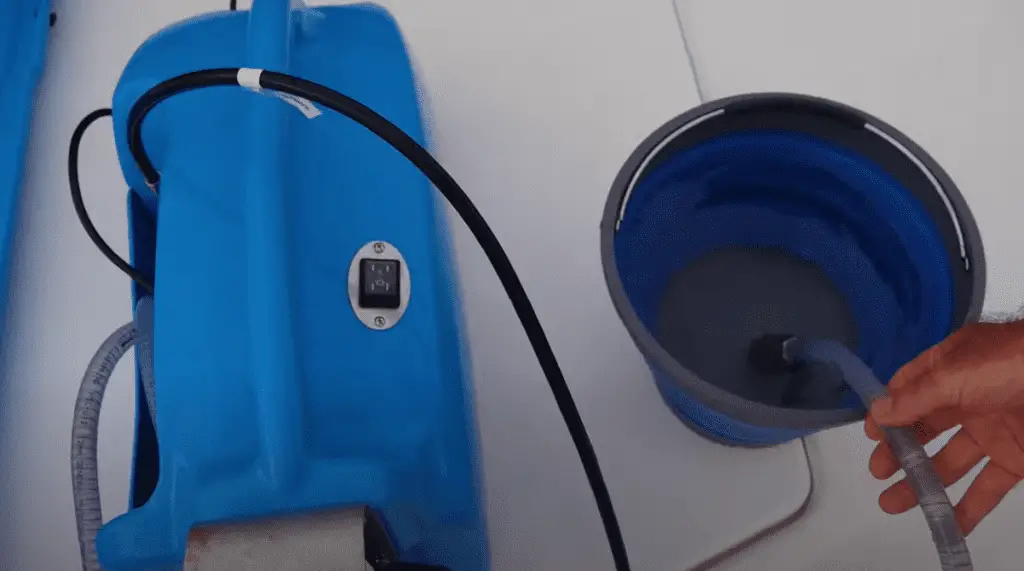
With a boat surrounded by water, there’s surely no such thing as dehydration out on the sea. Right? Well, not exactly. There’s way too much salt in seawater, and your kidneys would have to work overtime to filter it out. And to do that, they would need more water, which explains why copious amounts of seawater is toxic to humans.
So before you take a sip of that salty brine, why not pass it through a watermaker? The best watermakers for sailboats can take seawater and turn it into potable drinking water, giving you an infinite water supply to keep you hydrated and healthy on extended excursions.
What is a Watermaker?
Otherwise called a ‘desalinator’, a watermaker takes salty seawater and passes it through a process called reverse osmosis. This happens by pushing the water through a semi permeable membrane that allows the water molecules to pass through, but restricts salt, bacteria, and other organic material.
The clean, drinkable water is then passed into a water tank where you can then collect water for use. The remaining brine that was left during filtration is then tossed overboard and discarded. What’s nice is that these machines don’t use any chemicals, so there’s no risk of water contamination or pollution.
Some machines also use a pre or post treatment of the water using things like filters, sand, activated carbon, remineralization, or microfiltration to guarantee safe drinking water.
The Benefits of Watermakers

Modern-day technology has made it possible for manufacturers to develop more compact, efficient watermakers than ever before. This has also significantly driven down prices, making them far more accessible to sailors of all backgrounds.
Today, watermakers are recognized as a sailboat essential, especially for people who frequent the waves for long periods of time. Some of the benefits of these machines include:
Efficient Speed and Fuel Consumption
Yes, you read that right. Consider this - just 1 gallon of water weighs 8.3 pounds. If you’ve got 10 gallons on board, that’s equivalent to 83 pounds. A hundred gallons, and you’ve got an extra 830 pounds on board.
Watermakers allow boat owners to shave down their total weight. This lets you sail more efficiently, allowing faster speeds and lower fuel consumption which is important when you’re planning to sail long distances .
More Floor Area
Without a watermaker, you’d have to find room on board for the several tens or hundreds of gallons you need to bring with you. That also entails finding a place on your boat to store these water vats, which would obviously require significant room.
The watermakers of today are compact and lightweight. They can be either modular or self-contained, giving you different options to match your boat’s floor plan and use as little space as possible.
Safe Sailing
To ensure safe sailing, some studies have found that dehydration might actually be the reason for poor sailing performance. With dehydrated captains feeling lightheaded, achy, tired, and confused, it becomes increasingly likely to run into an accident that could endanger the lives of the people on board.
A watermaker guarantees that there will be fresh potable water at the ready any time you might need it. This doesn’t only curb the chances of dehydration, but also provides a solution for a variety of health conditions including diarrhea and various types of infections.
Extended Sailing Duration
You’ll only be able to sail for as long as your supplies on-board last. As your drinking water runs low, you’ll find yourself having to find the nearest dock to replenish supplies every so often. That’s if there are docks and shores you can access throughout your route. But what if there aren’t any?
Having the necessary equipment on board to extend your supply also means that you won’t have to rely on on-shore facilities to see you through your trip. This gives you more independence and flexibility as well as reducing the need to calculate complicated logistics.
Easier Boat Maintenance
Whether you’re underway or parked at the dock, your watermaker can help streamline boat maintenance by bringing freshwater straight to your vessel. With no need to collect buckets of water to lug back on board for a washdown, you can cut back the time and effort it usually takes to keep your boat clean.
Lots of boat owners even use their watermaker to give their boats a quick clean while they’re out at sea. This helps get rid of accumulated filth and dirt, reducing the need for a tedious deep clean once you get back to the dock.
The 3 Best Watermakers for Sailboats
Back in the day, watermakers were a luxury for the rich and the capable. But today, they’re incredibly affordable and easily accessible. Needless to say, manufacturers have also taken liberties with designing their own machines.
For you, that means an endless list of watermaker bets that could easily screw up your choice. So to help narrow down your options and lead you to the right one, here are our top 3 vetted picks:
1. Katadyn Power Survivor 40E Watermaker Desalinator

Small yet powerful, the Katadyn Power Survivor 40E is a reliable workhorse designed for boats with a small crew population of 2 to 3. This modular unit provides 1.5 gallons of water per hour, and draws only 4 amps from a 12-volt system, making it one of the most energy efficient desalinators out there.
This ‘Energy Recovery’ system works to desalinate seawater at just a fraction of the energy used by other watermakers in the same segment. Thus the device gets its name: Power Survivor.
Silent and lightweight, the machine lets you separate its primary system components so you can install the device seamlessly even in tight or awkward, irregular spaces. Most of its parts also come with a 3-year warranty, giving you that extra peace of mind versus damages and malfunctions.
2. AMPAC USA SeaPro Saltwater Desalination RO Watermaker

Able to produce 100 gallons per day, this watermaker was designed for use on small power boats or sailboats. Its super quiet automatic operation features intuitive controls that let you start and stop the desalination process with the push of a button.
Equipped with a noise pulsation dampener, the sounds produced during operation are negligible at best. This lets you run the machine in the evening to store up clean water for the next day without having to disturb your crew’s peace and quiet.
For boats with limited space, the SeaPro comes in a modular design that’s perfect for tight floor areas. It also comes in a partially mounted compact frame option that lets you fit the desalinator in place with little time and effort.
3. Rainman 12 Volt DC Watermaker
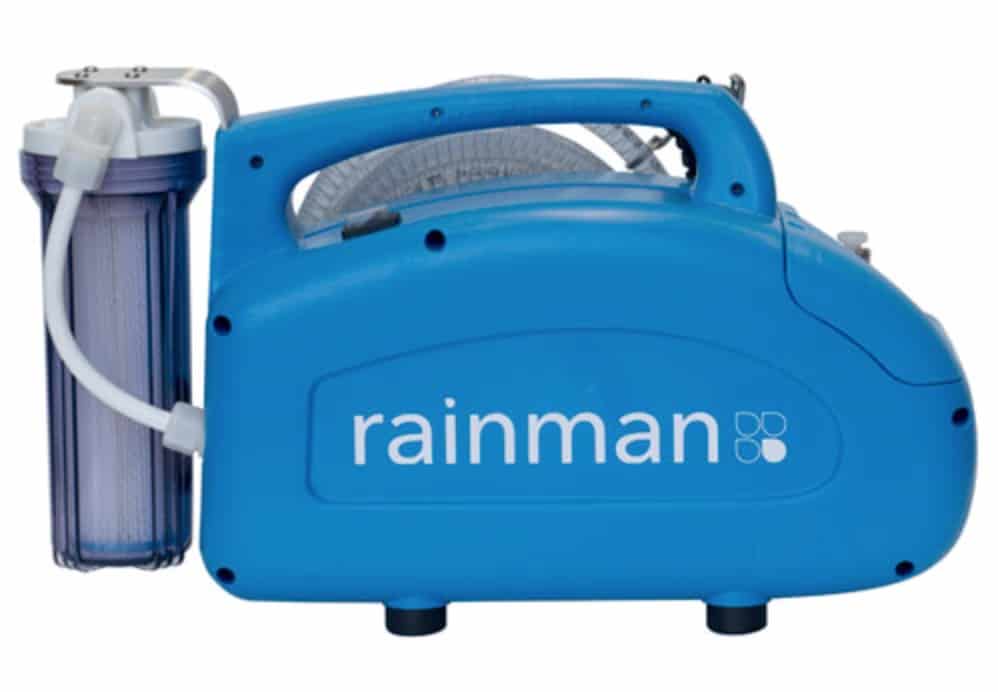
According to Rainman, their 12 Volt DC Watermaker consumes the least energy, able to filter 9 gallons of water per hour. The design touts a two-part system -- one pressure supply unit and another reverse osmosis unit. The former lifts the seawater from the source, while the other performs the desalination process.
What’s unique about Rainman’s watermaker is that the design gives you the option to install the unit directly to your boat, or to keep it handy as a portable watermaker system. This offers immense flexibility, allowing you to set up or take down your system as your situation calls for.
Aside from all of that, the Rainman Desalinator also features a streamlined control panel that makes everything easy to understand and operate at a glance. It also comes equipped with its own LED salinity sensor that tells you when water is good enough to store in your tank.
Choosing the Right Desalinator Watermaker
Not quite sure which one is right for you? Here are a few factors worth taking into consideration when buying a watermaker.
Size and Installation
There are two major options: modular and self-contained. The modular system lets you take the unit apart to install each part at a different part of your boat. This one’s ideal for boats with limited space. The self-contained system has the entire unit built together, which means it has to be installed as one piece.
Gallons Per Hour
How big is your crew? More people means you might need a watermaker with a higher GPH. Smaller machines capable of 1.5 to 2 GPH might be good for crews of 2-3 persons. But larger boats may need several hundreds of GPH to meet all of the crew’s needs.
* See: What size Yacht will Require a Crew?
Non-Proprietary Parts
You’re going to make part replacements one way or another. See to it that you’re buying a machine that uses non-proprietary parts so you can purchase the necessary replacements anywhere online.
Warranty and Services
In case anything happens to your watermaker, who will be there to help you fix it? Check the warranty coverage and see how long the manufacturer is willing to cover it for damages and malfunction. It’s also important to make sure there’s a nearby service center to cater to your needs in case of damage.
Water You Waiting For?
The best watermakers for sailboats offer to give you a virtually endless supply of clean drinking water when you need it. But there are a ton of choices on the market, so it pays to know what you’re getting before you shell out that cash. Consider our bets for the best desalinators for your sailboat, and keep your crew happy, healthy, and hydrated all along the way.
Related Posts
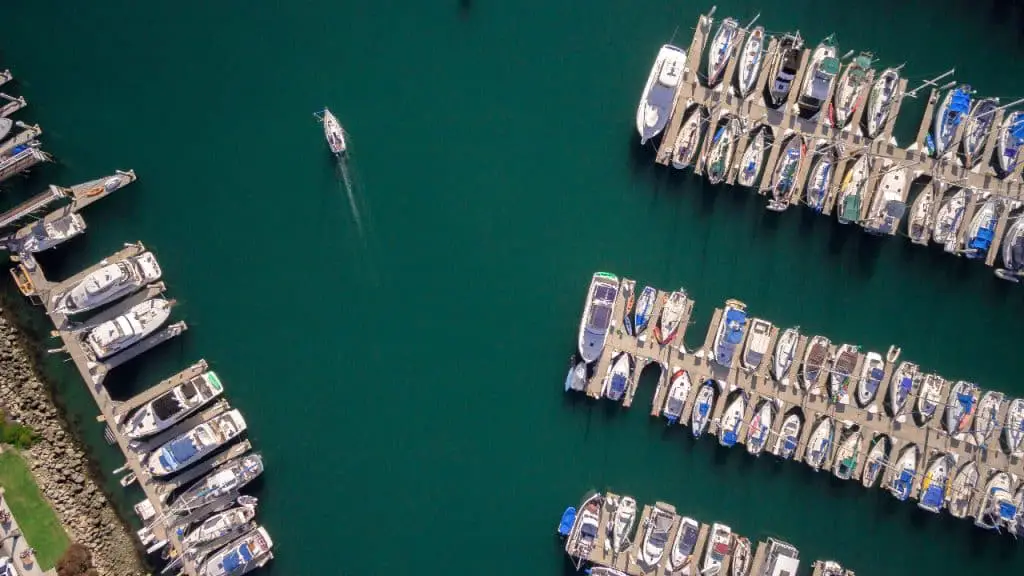
How to Become a Yacht Broker: Requirements Explained

Why Do Yachts Have Two Steering Wheels? (The Reasons)

Fishing From a Yacht: Secrets of Sailboat Fishing
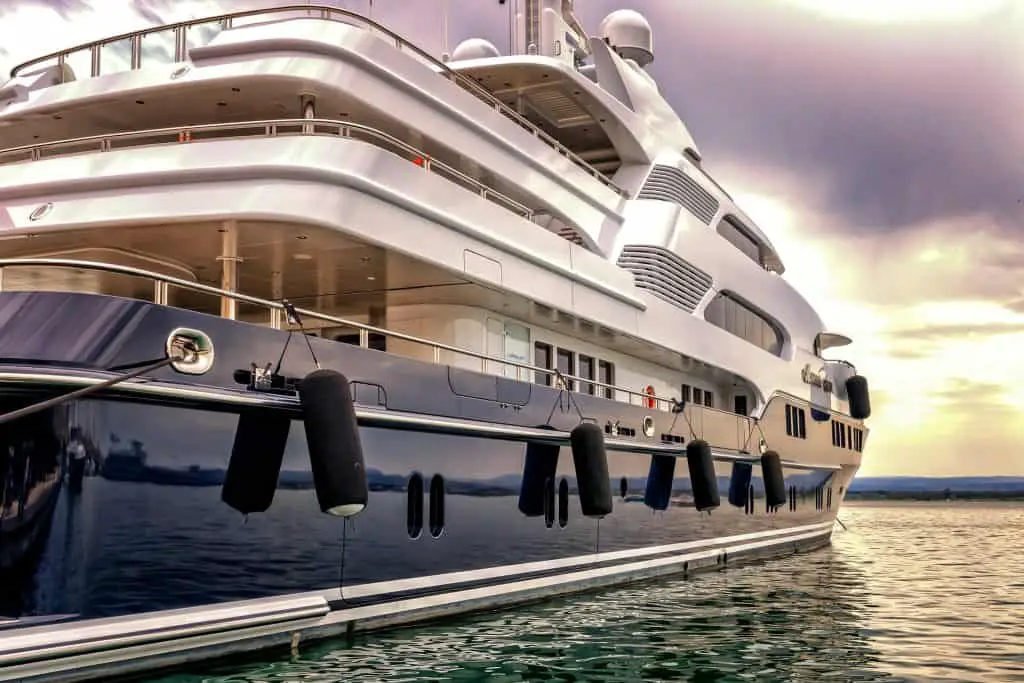
What Size Yacht Requires a Crew and a Captain?

- BOAT OF THE YEAR
- Newsletters
- Sailboat Reviews
- Boating Safety
- Sailing Totem
- Charter Resources
- Destinations
- Galley Recipes
- Living Aboard
- Sails and Rigging
- Maintenance
- Best Marine Electronics & Technology

Do You Need a Watermaker for Your Sailboat?
- By Jen Brett
- Updated: October 2, 2019
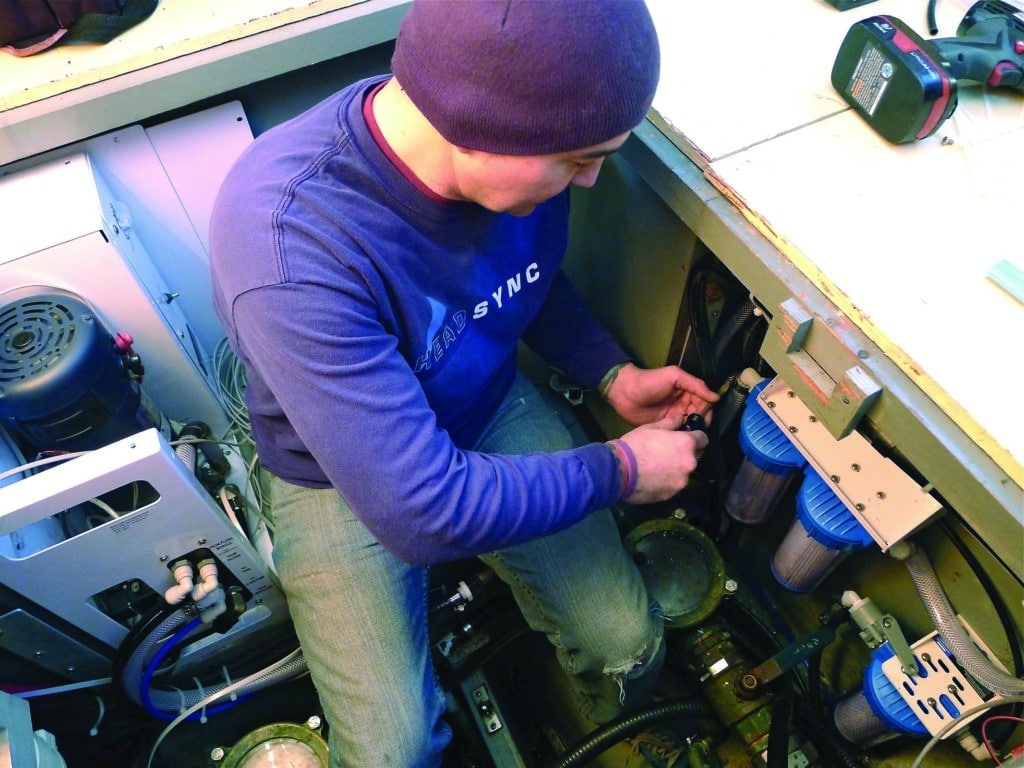
I remember, in the not too distant past, when having a watermaker aboard a cruising boat seemed to be the ultimate luxury. Plenty of sailors considered them too expensive and complicated. Fortunately times have changed. With improved technology and a range of price points on the market, now even average cruising boats of modest means carry a reverse-osmosis system. And really, is there anything that feels better after a day spent sailing and swimming than a hot shower? The freedom and security that come with full water tanks are also a nice bonus, particularly if you’re cruising in an area where fresh water is difficult to come by and pricey when you do.
Choosing a Watermaker
As with any major system, there are many factors to consider when you choose a watermaker. You’ll need to figure out your freshwater needs, the space you have available for the system and how you’re going to power it . Generally speaking, in a reverse-osmosis desalination system the raw water is run through a series of pre-filters, and then a high-pressure pump moves the water through one or more membrane housings. The wastewater, or brine, is released overboard and the product water goes into your water tanks.
Since all of the watermakers that are currently available for cruising sailboats use this process for desalination, the major differences between the systems are how you power the high-pressure pump and the user interface. Powering options include 120/220-volt AC, 12- or 24-volt DC and engine/belt driven. All have their pros and cons.
“The first question I ask a potential customer is ‘Will your boat have a ship’s generator?’” said Rich Boren of Cruise RO Water. “If they plan to have a generator, then the decision to go with a 120-volt high-output watermaker seems natural. While running the generator for battery charging and other loads two to three times per week, they can keep their water tanks full without having to make generator runs just to make water.”
A 12-volt system, such as the Spectra Catalina 300 Mk II or the Horizon Reverse Osmosis Seafari Quest, makes a lot of sense for smaller cruising boats since they don’t need a generator to run and have fairly miserly power consumption. On a breezy, sunny day, a solar panel and/or a wind generator will likely keep up with the demand. “The only difference between 12-volt DC low-output and 120-volt AC high-output watermakers is how the high-pressure pump brings seawater up to the 800 psi needed to drive fresh water through the reverse-osmosis membrane,” Boren said. “The membrane and support equipment, like pre-filtering and plumbing, are the same.”
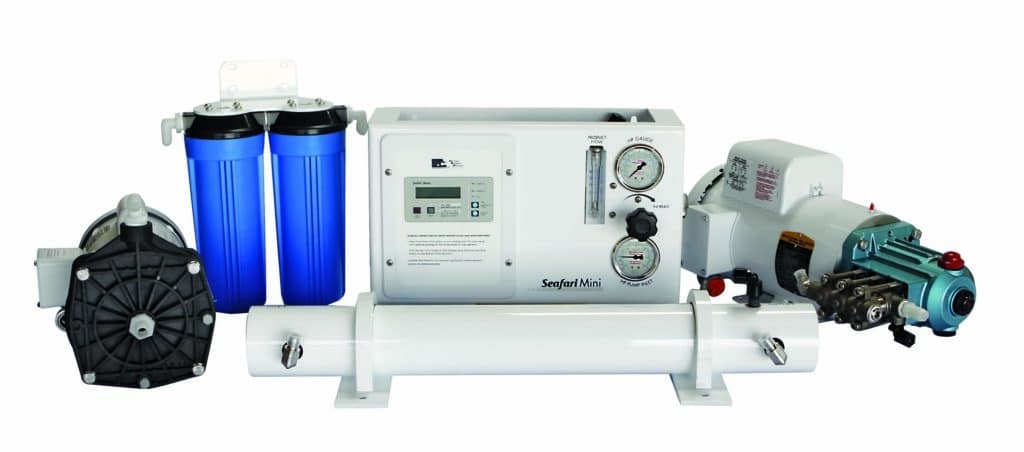
These systems typically produce anywhere from about 6 to 16 gallons per hour, and some units can do so for about a 1-amp-per-gallon power draw.
“Many smaller sailboats, under 45 feet or so, often utilize solar panels,” said Berkeley Andrews of Parker Hannifin, which produces Sea Recovery, Horizon Reverse Osmosis and Village Marine watermaker systems. “Their entire electrical backbone consists of 12-volt or 24-volt. So they must have a watermaker that can operate on low voltage. These customers have limited amp hours on their batteries, so all of their equipment must be suited to handling this.”
In choosing a watermaker, Bill Edinger, owner of Spectra Watermakers, said to be realistic about water needs. “When helping customers decide which system is right for them, first we like to determine their approximate water usage with questions like ‘How many people are aboard normally? Are you going to be living on the boat full time? Do you have a washing machine? Any children? Are you going to be cruising full time or leaving the boat for extended periods?”
A common error people make is choosing a watermaker that is too small for their needs. “The most common mistake I see cruisers making in their watermaker purchase decision is underestimating how much water it will take them to cruise comfortably,” Boren says. “I’m not talking about the minimal amount of water it takes for the crew to stay alive, because there is a big difference between staying alive and comfort. Selecting a watermaker that will only meet their minimal drinking-water needs but not keep up with the comfort needs of the crew can lead to crew tensions and feeling like camping rather than cruising.”
Remember that “watermakers are rated in gallons of production in a 24-hour period,” Edinger said. “So a 300-gallon-per-day watermaker system sounds like a lot of water. The important thing is that it produces about 12 gallons per hour. Normally a system like this will be run three to four hours per day if power is not a critical issue, in this case producing 36 to 48 gallons of water. It’s better for a system to run for a few hours every few days than an hour every day.”
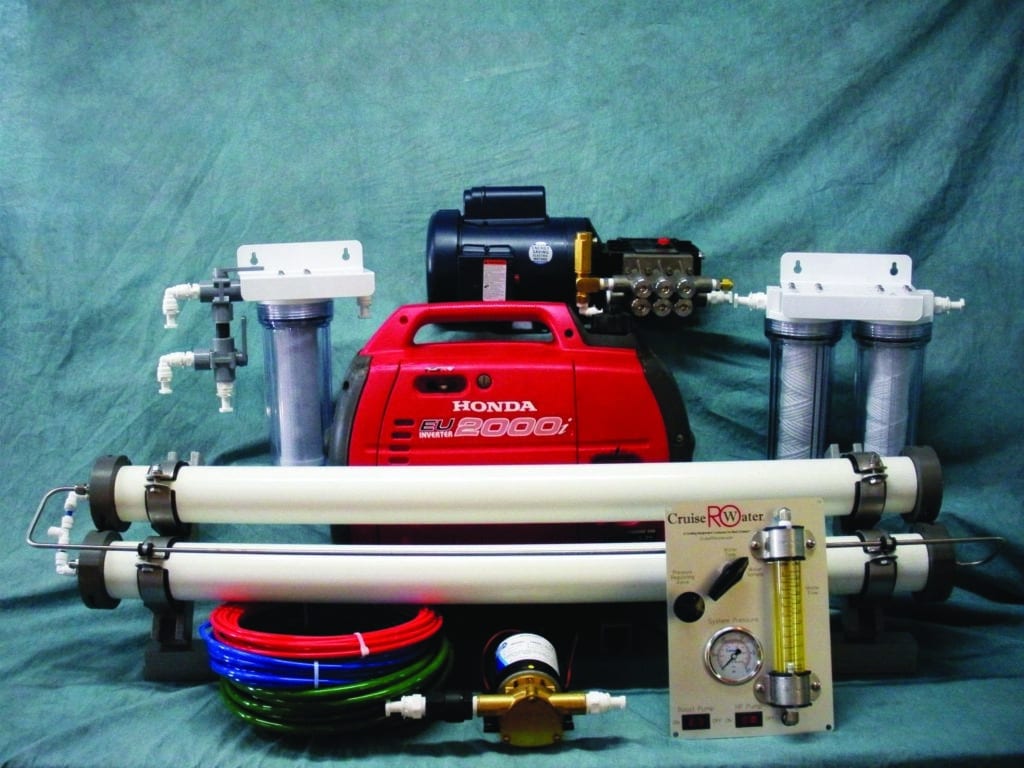
Watermakers for Small Boats
If space is at a premium, consider purchasing a modular system instead of an enclosed one. In a modular system, the components, such as the membranes and filters, can be mounted separately. Another power source for the high-pressure pump is the boat’s diesel engine. In these engine-driven setups , the pump and an additional pulley are mounted on a custom bracket next to the engine. The watermaker can then be run while motoring or using the engine to charge the batteries.
While engine-driven watermakers can produce a large amount of water, 20 or more gallons an hour on average, the downside is that the installation can be more complex than for other systems. “Unlike the 12-volt DC or 120-volt AC watermakers, where you simply bolt the high-pressure pump down and then run the wires and plumbing hoses, the hardest installation aspect of an engine-driven watermaker is finding space. Some boats simply have no room in the engine compartment to mount the 5-pound pump with a 7-inch pulley on the engine while still leaving access to other engine parts that need to remain serviceable,” Boren says.
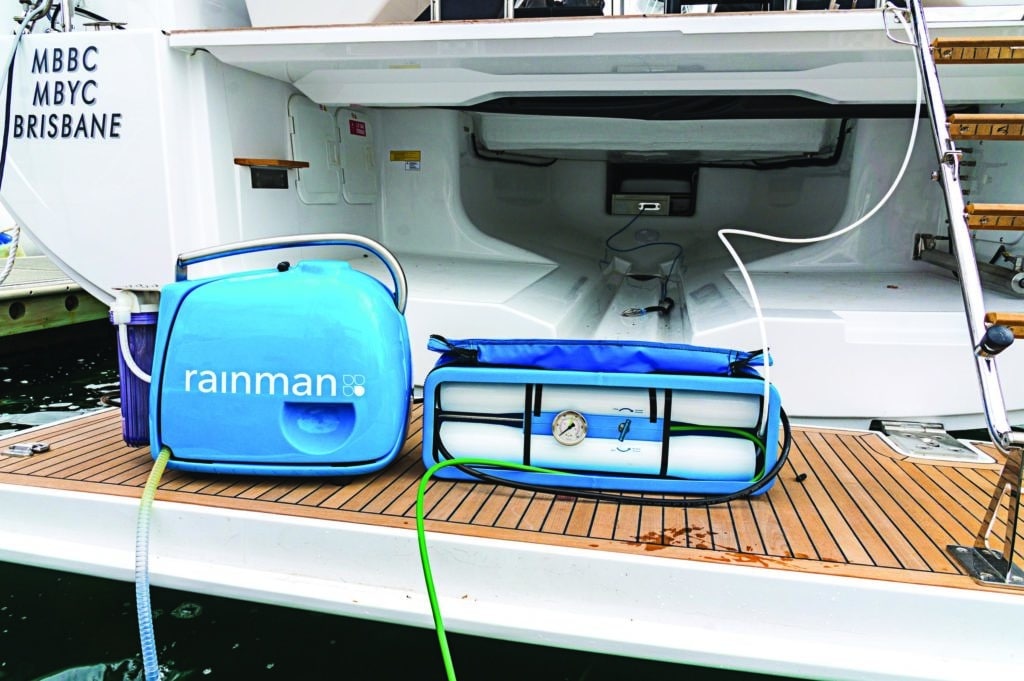
A relative newcomer to the marine market, the portable watermaker is a good solution for cruisers who want the convenience of a watermaker but don’t want to permanently install one. The Rainman is one such system that is available as a self-contained unit driven by a gasoline-powered Honda motor, or as a 115-volt AC-powered unit. “The bulk of our gasoline-powered system customers are sailing yachts between 30 and 50 feet,” said Ron Schroeder of Rainman Desalination. “Our customers seem to prefer to have a simple and somewhat manual system over one that relies on control panels, software and solenoid valves. We are also attractive to those customers who have had bad experiences with the installation process of an installed system.”
The Spectra Passport is another portable system. Edinger said it has already proved popular with offshore race crews and cruisers who need a watermaker for only a limited time.
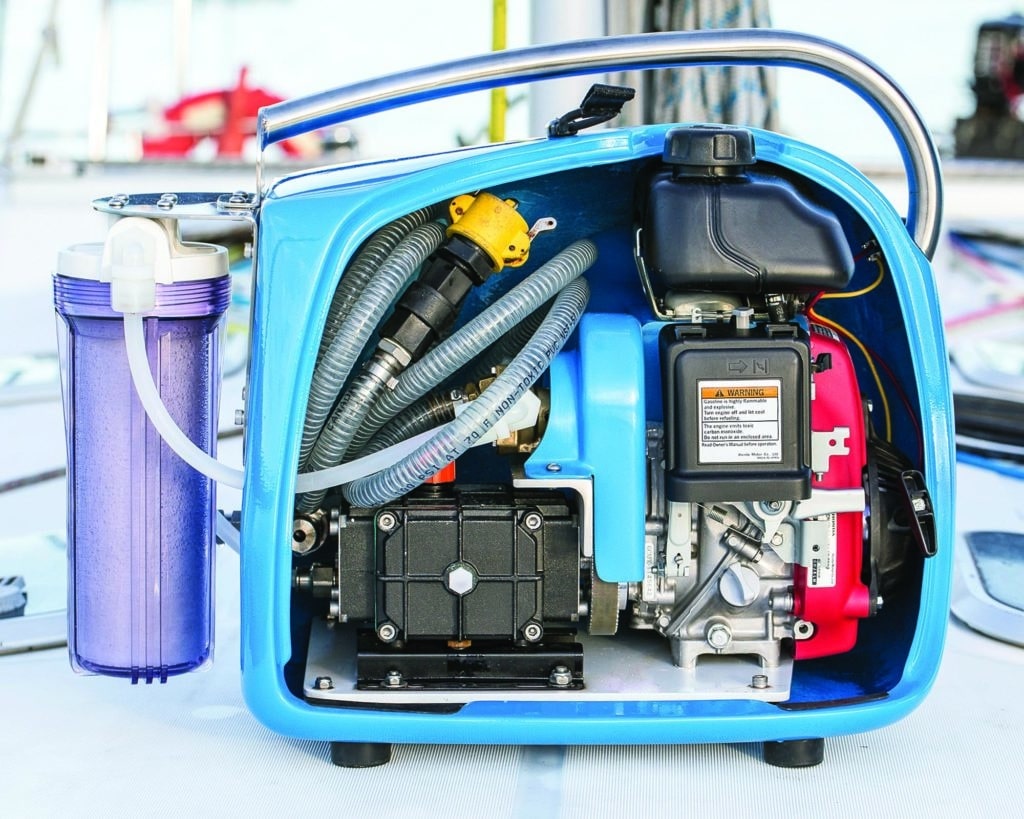
Maintenance for Watermakers
Watermakers have long had a reputation for being difficult to maintain, but the equipment has improved over the years and overall, routine maintenance isn’t more challenging than with other onboard systems. “The best rule of thumb is to operate the watermaker in water that looks good,” Andrews said. “There are a few factors in the feed-water condition that come into play. Operating a watermaker in dirty harbors will most certainly result in repeated pre-filter changes and a clogged sea strainer. If you have extra filters on board, you can get by, but it’s not recommended. The environment in the open ocean and remote anchorages is much better. Also consider how shallow the water is where you’re anchored. Sometimes there can be a lot of tidal movement, which can kick up fine particulate and sediment. This too can also contribute to more frequent filter changes and even damage other components. A nice option is an automatic freshwater flush, which will rinse the watermaker’s membrane element after use. It helps keep the membrane vessel housing free of any biological growth that could foul the membrane and reduce your ability to produce fresh water.”
Whatever system you choose, with proper use and maintenance you can expect years of service from your watermaker. And plenty of hot showers.
Jen Brett is a CW associate editor. This article first appeared in the February 2015 issue of Cruising World.
Aqua Marine: www.aquamarineinc.net
Blue Water Desalination: www.bluewaterdesalination.com
Cruise RO: www.cruiserowaterandpower.com
Dometic Marine Sea Xchange: www.dometic.com
ECHOTec: www.echotecwatermakers.com
FCI Watermakers: www.filtrationconcepts.com
Horizon Reverse Osmosis (HRO): www.hrosystems.com
Katadyn: www.katadyn.com
Rainman: www.rainmandesal.com
Sea Recovery: www.searecovery.com
Schenker Watermakers: www.schenkerwatermakers.com
SK Watermakers: www.skwatermakers.net
Spectra Watermakers: www.spectrawatermakers.com
Village Marine Tec: www.villagemarine.com
Watermakers Inc.: www.watermakers.com
- More: DIY Sailboat Projects , How To , systems
- More How To

3 Clutch Sails For Peak Performance

It’s Time to Rethink Your Ditch Kit

8 Ways to Prevent Seasickness

How To De-Winterize Your Diesel Engine
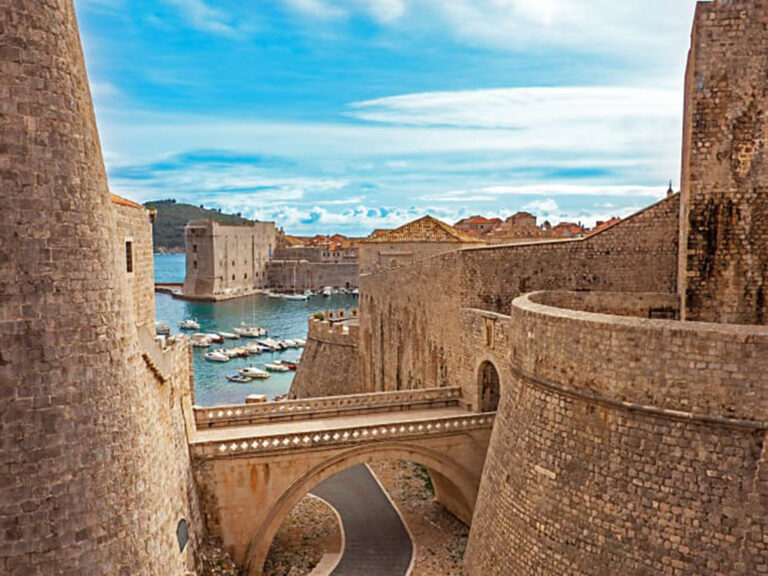
The Moorings Expands in Croatia
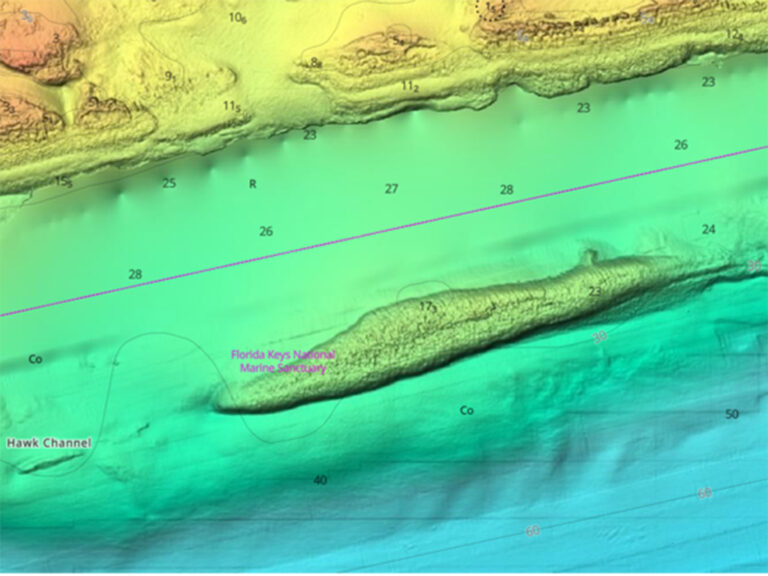
C-Map Updates North America Charts
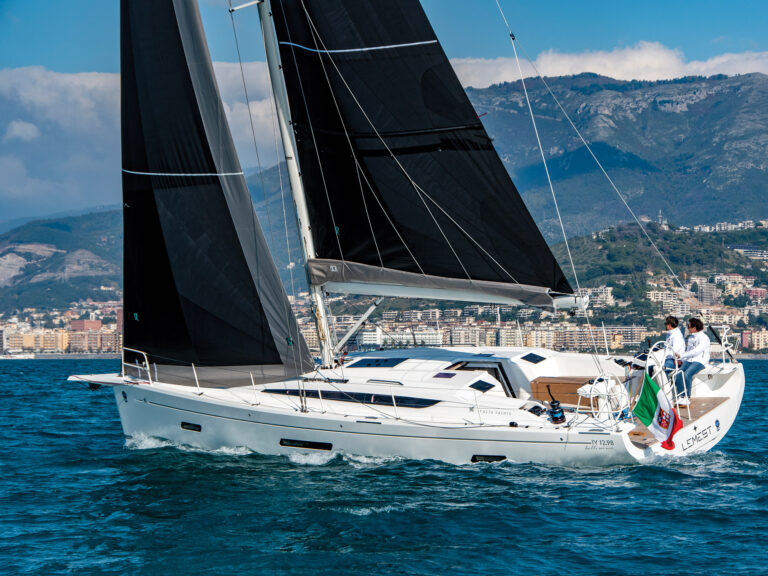
New to the Fleet: Italia Yachts 12.98
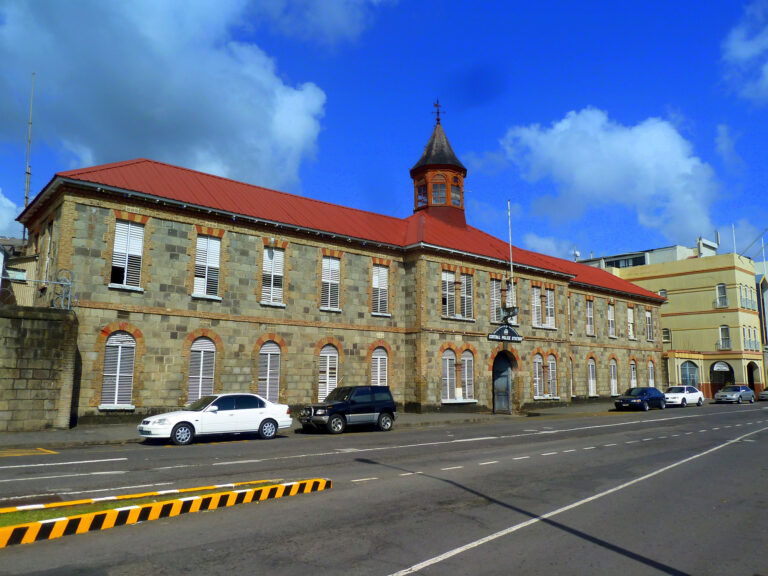
St. Vincent Court Orders Deportation For Hijacking Suspects
- Digital Edition
- Customer Service
- Privacy Policy
- Terms of Use
- Email Newsletters
- Cruising World
- Florida Travel + Life
- Sailing World
- Salt Water Sportsman
- Sport Fishing
- Wakeboarding
Many products featured on this site were editorially chosen. Cruising World may receive financial compensation for products purchased through this site.
Copyright © 2024 Cruising World. A Bonnier LLC Company . All rights reserved. Reproduction in whole or in part without permission is prohibited.

- Rainman Watermakers
Because making water, should not be so complicated
Rainman watermaker systems can be purchased in a portable or installed system. Convert between configurations as to best suit your needs.
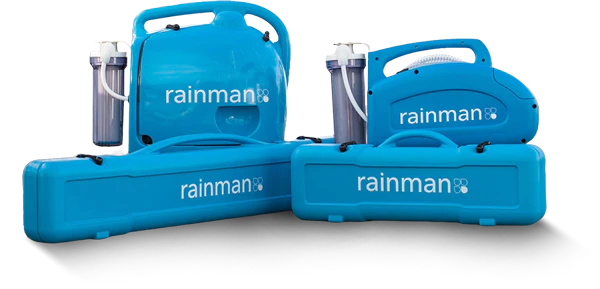
Worldwide shipping available –
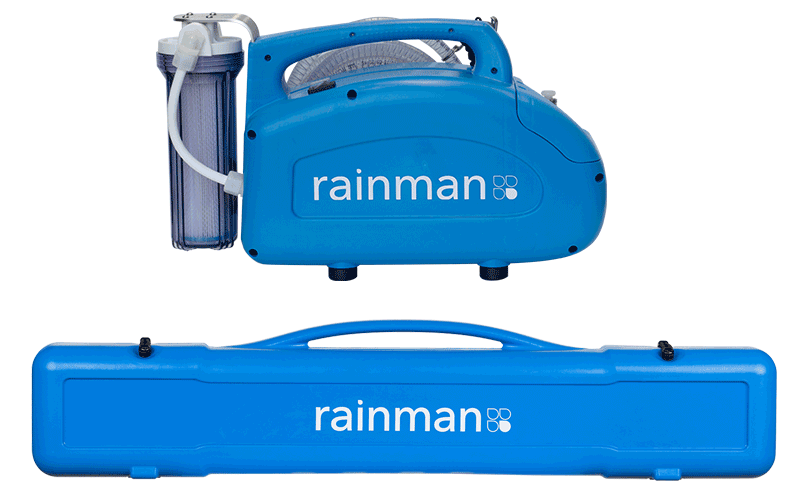
Portable Watermakers
Portable Rainman Watermaker systems are ideal for applications with AC or DC power onboard.
No Installation required, ready to go in 10 minutes!
Download Manuals
Operation Manual – Electric (AC or 12VDC) System v2.81
Quick Reference Card – AC Electric
Quick Reference Card – 12VDC Electric v2.1
Rainman Mk1 Electric PSU Case Removal v1.2
Dow Filmtec SW30 RO Membrane Manual
Sodium Metabisulphite Material Safety Data Sheet
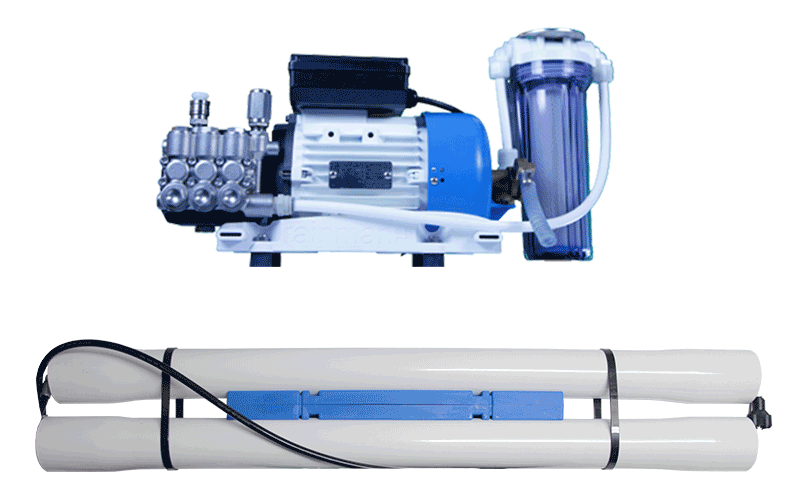
Installation Watermakers
Rainman Watermaker’s are ideal for installation, single motor configuration, hardware included.
Take the stress and expense out of installation.
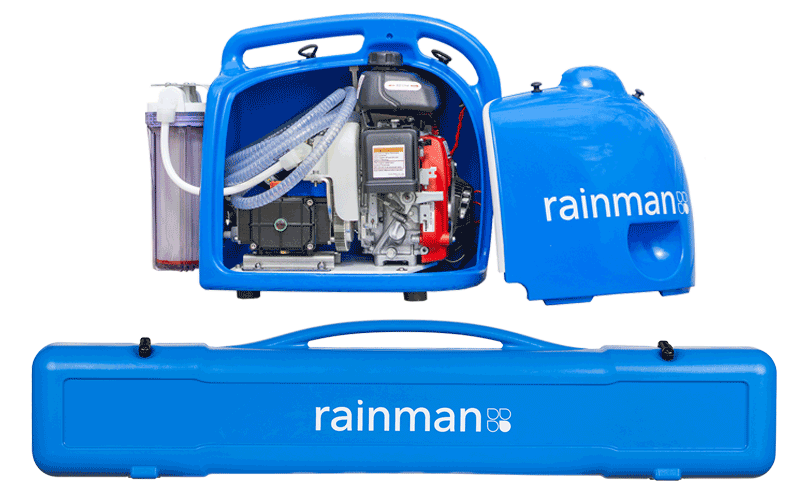
Gasoline Watermakers
Gasoline Watermakers are ideal for true redundancy. Ideal for applications with no power.
Flexibility for taking it ashore.
Operation Manual – Petrol (Gasoline) System v1.7
Quick Reference Card – Petrol (Gasoline) v2.1
Honda GXH50 Motor Manual
Use the System Guide to help choose your Rainman Watermaker
ACCESSORIES
Spare parts & consumables.
- Pickle Solution
- (RO) Membranes
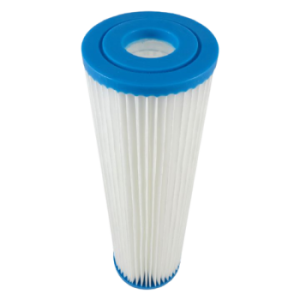
Your new Rainman watermaker comes with 5 prefilters (one fitted and four spares). Depending on the source water, each filter should last between 5 and 50+ hours. They are non-proprietary and readily available around the world.
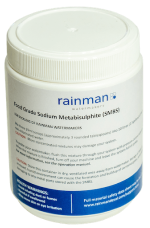
Your new Rainman watermaker comes with a 1 kg (2.2 lb) tub of food grade sodium metabisulfate. You only use 3 tablespoons when you store the system for extended periods, so this tub should last quite a long time. We normally do not recommend extra pickle solution mix at the time of purchase.
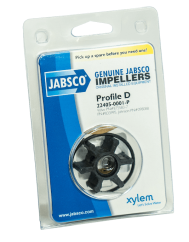
The impeller requires changing every year or two. We use standard sized impellers that can be sourced from Jabsco, Johnson, Oberdorfer, etc. They are inexpensive and small, so it may be worth keeping a spare on hand.
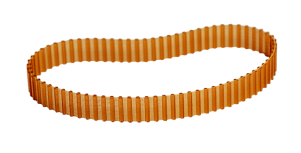
If you have this system, there is a drive belt that should last for many years. Although it is generally unnecessary, some customers prefer to keep a spare. The electric watermakers do not use a drive belt.
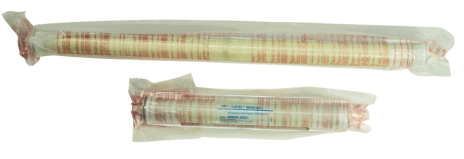
When properly taken care of, your RO membranes should last between 5 and 10 years. We do not recommend customers carry spares. Rainman utilises DuPont Filmtec membranes, which we believe are the best in the world. They are non-proprietary sized and readily available. The TDS (total dissolved solids) readings of your product water will increase over the years, so most people look to change membranes when it climbs near 800 ppm (parts per million) of TDS.
Total System Overview
RAINMAN WATERMAKER
Desalination systems.
There’s Water Everywhere Demand for fresh water has increased dramatically in recent decades.
Many of us now expect daily fresh water showers with pressurized plumbing and unlimited drinking water. Having an operational desalination system available provides independence and flexibility.
Rainman watermakers provide clean, reliable and convenient fresh water regardless of your location. Onshore, Rainman Watermakers provides rescue teams, property owners, survivalist and off-the-grid facilities with a clean and reliable source of fresh drinking water for personal or operational use.
Until now, the only option has been a complex built-in desalination system. The high expense, complexity and maintenance of such systems have been daunting, often requiring downtime and technician call outs for maintenance or repairs.
Introducing the worlds first easy to use, low maintenance and inexpensive watermakers that doesn’t need to be installed and is built to operate as a fully functional primary system. Providing an uninterrupted water supply, and peace of mind that won’t break your bank.
With our range of portable and installation Rainman Watermakers and Desalination systems, these simple to operate watermakers are capable of producing up to 37 Gallons/hour, and if the requirement to permanently or partially install your Rainman Watermaker into your vessel, the system can be integrated at will, without a complex installation.
Portable or Installed configurations
Rainman Watermakers are available in Portable and Installed configurations. Each can be converted to the other for maximum flexibility! Portable and installed systems allow for you to choose the best fit for your application as your preference changes.
PORTABLE WATERMAKER
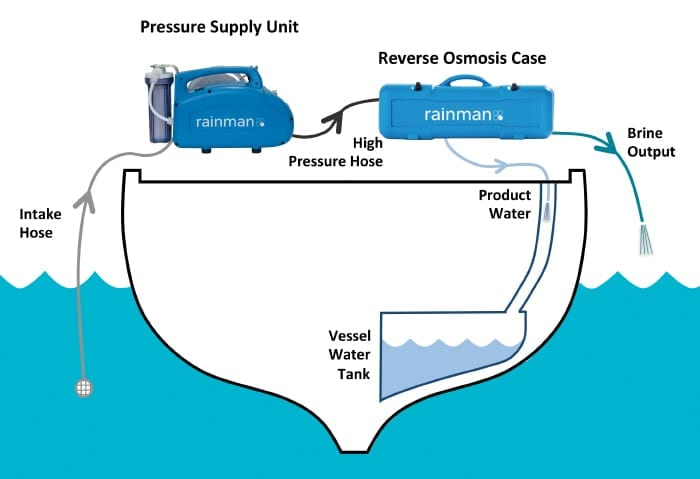
The Rainman Watermaker portable configuration comes ready to go right out of the box. With set up of your portable desalination taking as little as 10 minutes, you can benefit right away from a fully functional, and extremely robust portable desalination system without the cost and downtime of complex installations.
INSTALLATION WATERMAKER
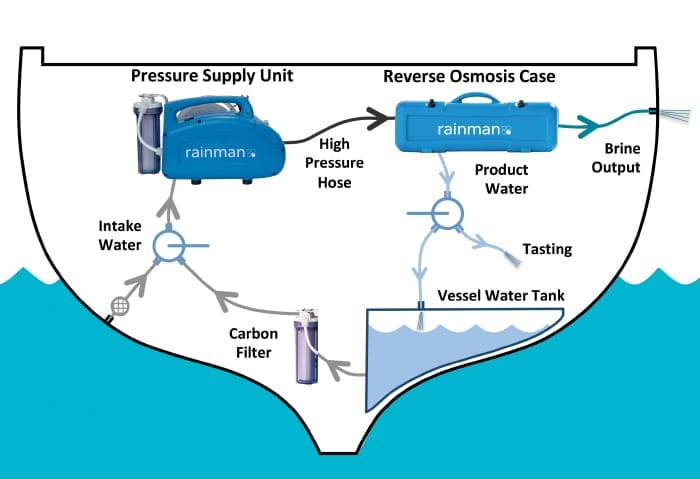
Rainman watermakers can be installed within there sturdy cases, or as a traditional installed module. This gives you the flexibility should you choose to install your watermaker immediately, or if even you decide to in years from now. A range of accessories are available to help you install your Rainman watermaker in our parts store.
Electric or Gasoline Watermaker
Rainman Watermakers are solid, robust portable desalination systems designed for the extremes of a maritime environment and built with ingenuity, with the most popular of our systems needing only a small portable generator to operate, and our gasoline systems being completely independent and backed by the global and prestigious Rainman Honda warranty. Check out the videos below to watch out most popular portable desalination systems in action and why you too will fall in love the Rainman Watermakers.
ELECTRIC WATERMAKER
Rainman watermakers are quick and easy to setup, yet very simple and reliable to operate. Our 115V rainman desalination systems are the most popular system on the market.

GASOLINE WATERMAKER
True portability, our gasoline systems require no external power, and are the icon of true efficiency. 1 gallon of gasoline equals 140 gallons of water. No Power, No Problem.
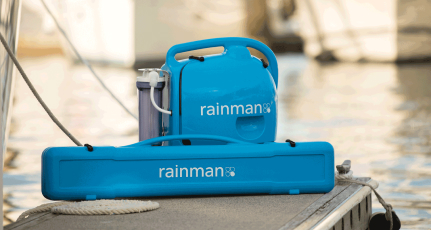
Helpful Links

Empowering Your Marine Adventures
Contact number
We are monthly supporters. click below to donate..

- HVAC & Refrigeration Services
- Marine Solar
- Marine Electrical Systems
- Solar Frame Fabrication
- Standing Rigging & Forms
- Running Rigging & Forms
- Lifeline Rigging & Forms
- Anchor Chain & Rode Form
- DIY Marina Wet Slips
- Haul-Out Facilities
- Sailboat Arches
- Stern Arch & Davit Install
- Blue Wave USA
- Cyclops Load Sensors
- Robline Ropes
- Marlow Ropes
- Mantus Marine
- Tides Marine – SailTrack
- Anchor Chain and Rode
- Waterline Design
- Furlex Furling Systems
- Selden GX & CX Furlers
- Selden SMF System
- Bamar Products
- Hood Furling Systems

- Victron & Solar Panel Store
- Kilovault Batteries
- Custom Fabricated Frames & Arches
- Mabru Air Conditioners
- Velair Air Conditioners
- Spectra Watermakers
- RuuviTag Pro
- Integrel Solutions
- Manuals/Catalogues
- Account details

Salt Creek Marina and Yard Rules & Regulations (DIY & Storage)
“Common Sense, Compliance with Laws, Consideration Toward Others” (January 1, 2023)
This agreement shall be effective on the date hereunder by and between the undersigned Owner or Agent of the vessel(s) hereinafter (“Vessel Owner”) described below and Salt Creek Marina, Inc. and The Yacht Rigger LLC located at 107 15th Ave SE, St. Petersburg, FL 33701.
8/21/2023 UPDATE – If a hurricane system becomes a named storm and your boat is in one of our wet slips you MUST move it back to its original berth. The boat is not allowed to stay. The owner is responsible for planning with their preferred captain, or The Yacht Rigger has two captains on staff.
1. Fees: The Yacht Rigger and Salt Creek Marina reserves the right to change its rates upon one (1) months’ notice.
- Monohull DIY Dry Storage will be $900 monthly or $225 weekly, with a minimum of 1 week required. After the first 4 weeks, the rate will increase by $50 per week, for the remainder of the boat’s duration.
- Monohull Wet Slip will be $1,100 monthly or $275 weekly, with a minimum fee of $100.
- Catamaran Wet Slip will be $2200 monthly or $550 weekly.
- Haul / Block / Relaunch – One Time Charge $12 per foot
- Emergency Haulout – $25 per foot
- Short Haul – – – Special Haul to be scheduled by The Yacht Rigger or approved contractor only + $175 contractor fee (includes normal haul out rate)
2. Insurance: Vessel owners must provide insurance with Salt Creek listed as additional insurer on their vessel before arrival. Vessels must always be insured.
3. Hurricane & Summer Storm Season: June 1 – November 30 Haul out boats for storage or DIY work on the hard during this time are required to remove all canvas (including but not limited to Bimini, sail covers, dodgers, e.g.) as well as all sails on the boom or furlers. Remove all moveable equipment: canvas, sails, dinghies from davits, cushions, water toys, grills, biminis, roller furling sails, etc. Canvas and sails must be stored below and not on deck. Lash down everything you cannot remove tillers, wheels, booms.
4. Live Aboard – Wet Slip Only (Yacht Rigger Only Rule): Starting January 1st, 2024, customers may NOT stay on their vessel during electrical refit work or other major modifications or upgrades down below. Due to the nature of these projects requiring major upheaval down below within your living space and the need for our teams to work efficiently. Rigging and “above deck” type work will permit liveaboards. As much as we would love to accommodate liveaboards during this time, it is simply too inefficient for us and expensive for you, the customer. For vessels with excessive items on board preventing efficient work, we will provide on-site storage pods at market rates.
5. Third Party Warranties: This includes any warranty claim that is to be made against the original manufacturer or seller of the vessel or product. Should a warranty claim arise, The Yacht Rigger will estimate the job accordingly. It will then be up to the customer to obtain approval from the applicable 3rd party (boat manufacturer, spar manufacturer, etc.). If approved & immediately upon completion of the warranty issues, the customer is solely responsible for the payment of the work completed. It is then the responsibility of the customer to be reimbursed by the applicable 3rd party.
6. Yard Hours: The boatyard hours are 8:00am to 6:00pm, Monday- Sunday. The boatyard gate locks at 6:00pm. You may come check on your vessel, re-secure rigging, canvas and pump out water during business hours. Please check in with the office if you are near closing hours.
7. Utilities: Boatyard provides power & water to vessel owners as a part of their agreement so long as the owner fully adheres to all Rules and Regulations. When you are finished with the water hoses, turn them off and place them back neatly in the area you found them. Please ask a Salt Creek Marina Boatyard Employee for access to either option.
8. Outside Contractors/ Subcontractors With Management approval (determined individually) contractors may work on a storage vessel for a fee of $40 a day in addition to monthly storage/dockage fee. The owner shall be responsible for informing the office of any subcontractor working on the vessel for any purpose whatsoever. The subcontractor shall submit insurance before any work can commence. Salt Creek Marina and/or The Yacht Rigger reserves the right at its sole discretion to stop unsafe work practices and if deemed necessary to order the offending worker(s) to leave the site at the Owner’s/Skipper’s sole risk and expense.
9. Supplies: All paint including but not limited to, bottom paint, primer or barrier paint, haul or topside paint, varnish or otherwise any paint being applied to your vessel must be purchased through the Boatyard or approved by Management. This policy is for safety and environmental protection purposes of all persons operating in the Boatyard. Paint will normally arrive within 24hrs of purchase.
10. Paint Spraying: There shall be no spraying in the Boatyard under any condition. Any person spraying any paint will be immediately expelled and fines levied.
11. Cleanliness: All vessel owners shall be responsible for keeping their area clean and professional. The Boatyard reserves the right to charge the vessel owner for any cleanup required to comply with RR. All debris associated with boat repair activities must be disposed of daily. A dumpster is located near the parking area.
12. Disposal: There is a designed disposal station of 55 gal drums for oil and one for oily rags and filters located near the office door. PLEASE DO NOT PUT GASOLINE IN THESE DRUMS.
13. Facilities: Bathrooms are provided as a courtesy to all Customers. We will make our best efforts to keep it clean but reserve the right to limit access any time. Please use the outside sink for heavy clean up and use the indoor head/sink for bathroom purposes only. The Yacht Rigger has its own set of facilities to be used by its staff and customers. Please do not use SCM facilities.
14. Parking: Park in the designated parking area. Vehicles should be parked clear of travel lift path, not in storage areas, on the seawall or blocking boats. Salt Creek Marina and/or The Yacht Rigger is not responsible for vehicles that are damaged by equipment or conditions in the yard
15. Regarding noise outside of the scope of work not being completed, i.e., radio/stereo volume, please be respectful of neighboring boat owners’ tenants.
16. Salt Creek Marina and/or The Yacht Rigger is not responsible for any theft or loss of items left on or around the vessel.
17. The yard takes no responsibility for accidents, injury, or death to any persons in or working within the yard at any time. All people wishing to enter the boatyard for any reason do so at their own risk.
18. Failure to comply with these rules and conditions can result in additional charges if Salt Creek Marina and/or The Yacht Rigger personnel are required to do site cleanup operations and/or will be asked to remove your boat from the marina.
19. Additional Rules:
- Owners are not permitted to test engines, run water for AC or other purposes while on the hard. All electricity and water shall be for the sole purpose of working on their vessel and disconnected when unoccupied.
- There are to be no mobile AC / Heater Units or Refrigeration Units to be run on the hard.
- No unfurling of sails will be permitted at any time, under any circumstance.
- There is to be no hot work, flame cutting, welding etc. to be done in the yard.
- Jack stands and blocking may only be used and moved by employees of Boatyard.
- Boatyard reserves the right to move vessels when needed without permission or notifying owners.
- Any trailer, dingy, mast, or other personal property not directly attached to the vessel must be pre-approved, additional charges will apply if approved.
- Packages – you are welcome to send packages to our address here, but please make sure they state your name and “CO The Yacht Rigger” and limit your packages to 5 a week.
Any modifications outside of these rules will be determined individually by Management. REMEMBER THESE RULES & REGULATIONS ARE FOR EVERYONE’S BENEFIT. PLEASE HELP KEEP THIS BOAT YARD A CLEAN & SAFE WORKPLACE. ** Salt Creek reserves the right to change these rules at any time.

Use coupon code to activate discount. Add to coupon code box on your cart page.
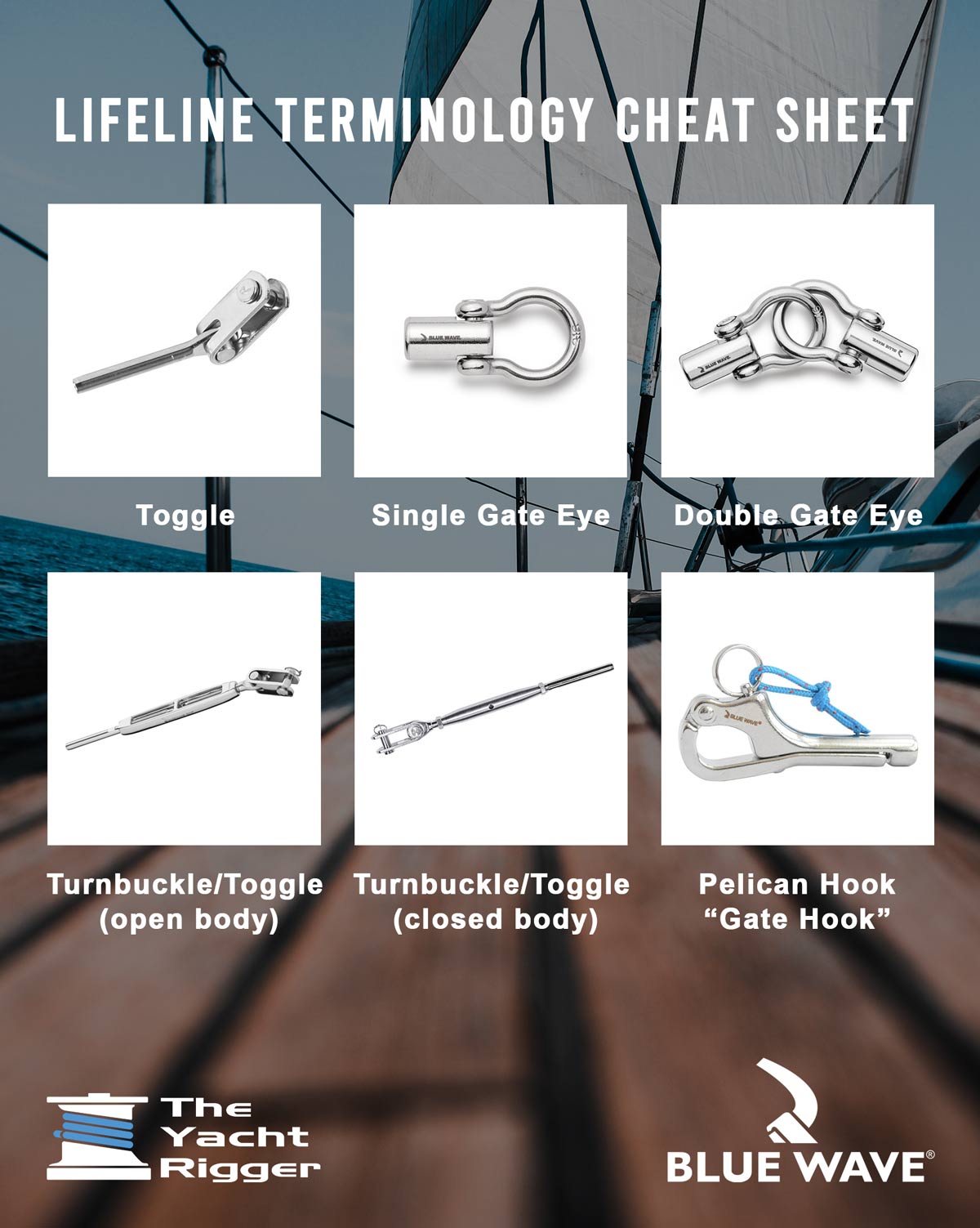

Home » Blog » Gear » Watermakers: a guide to marine desalinators and making water on a boat
Watermakers: a guide to marine desalinators and making water on a boat
By Author Fiona McGlynn
Posted on Last updated: March 23, 2022
There’s something magical about a watermaker—at least that’s how I felt after we installed one on our boat. That may sound overblown, but think about it: watermakers transform salt water into fresh water, providing a near-endless supply of potable water for drinking, bathing, and cleaning! THAT my friends is an amazing piece of technology!
(If you don’t share my enthusiasm, try going without a shower for a few days and you’ll begin to see my point).
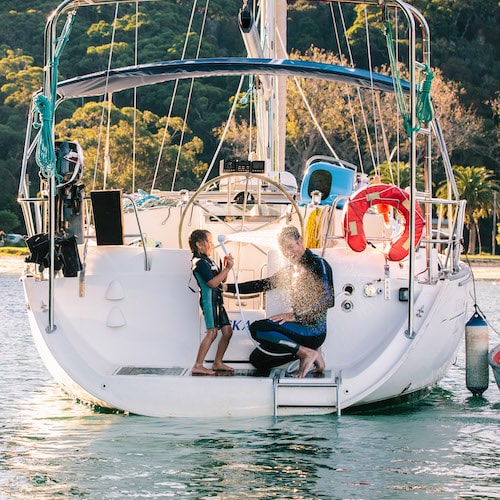
Having experienced living on a boat and cruising, both with and without a marine desalinator, I can attest that it’s a game-changing piece of gear. However, you definitely don’t need one to go cruising. There are plenty of low-tech ways to collect and make water on a boat.
Marine desalinators do offer some major benefits: there’s more water for showers, it’s easier to travel farther afield, you can spend more time in a remote location. However, these benefits have to be weighed against the drawbacks: namely a hefty price tag and ongoing maintenance.
Deciding whether a watermaker is right for you will come down to the type of cruising you’re doing, how much water you need, and your budget. Read on to learn about the pros and cons, costs, and key features of marine watermakers.
Table of contents
- 1 How does a watermaker work?
- 2.1 Benefits
- 2.2 Drawbacks
- 3.1 Powered or handpump
- 3.2 Electric or engine drive
- 3.3 Energy recovery watermaker
- 3.4 Modular, self-contained, and portable watermakers
- 3.5 Automatic flushing systems
- 3.6 Automatic Pressure Regulation and adjustable pump speed
- 3.7 Remote control panels
- 4 Top watermaker brands
How does a watermaker work?
A watermaker on a yacht converts seawater into fresh water through a process known as reverse osmosis (RO). A high-pressure pump pushes seawater through a semi-permeable membrane that filters out salt, organics, and bacteria. The fresh water is pumped into your water tanks while the remaining brine bi-product is discharged over the side of the boat, back into the ocean.
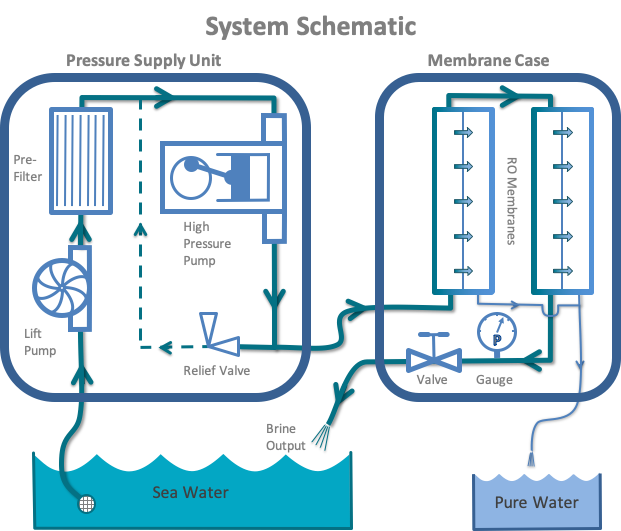
Marine watermakers: the benefits and drawbacks
Less water rationing.
When we started our 13,000 mile trip across the Pacific, we didn’t have a watermaker. We were on a tight budget and decided to prioritize other pieces of equipment like a life raft and wind vane.
As a result, we became experts in conserving water on a boat . We would carefully ration out water for washing dishes, taking showers, and even brushing our teeth!
After getting a watermaker we became far less meiserly because we knew we could always make more water if we needed to. It was a relief to not be constantly thinking about how much water we were using over the course of a day.
That being said, we couldn’t relax completely. We had to keep our tanks topped up, so as not to run the pump dry. We also always carried potable water in reserve, in case our watermaker broke in the middle of a long passage.
More luxuries
Can’t live without a proper shower? A boat water maker can make water-intensive luxuries like freshwater deck washdown, freshwater flushing heads, laundry, daily showers, and even baths, a possibility.
As great as this sounds in theory, we were surprised to find that we didn’t indulge in more showers after we got the watermaker.
We continued to use a hand pump pesticide sprayer to shower on deck despite having a watermaker and shower below. While some of this came down to habit, we also disliked running our engine (and consuming diesel) just to run the watermaker.
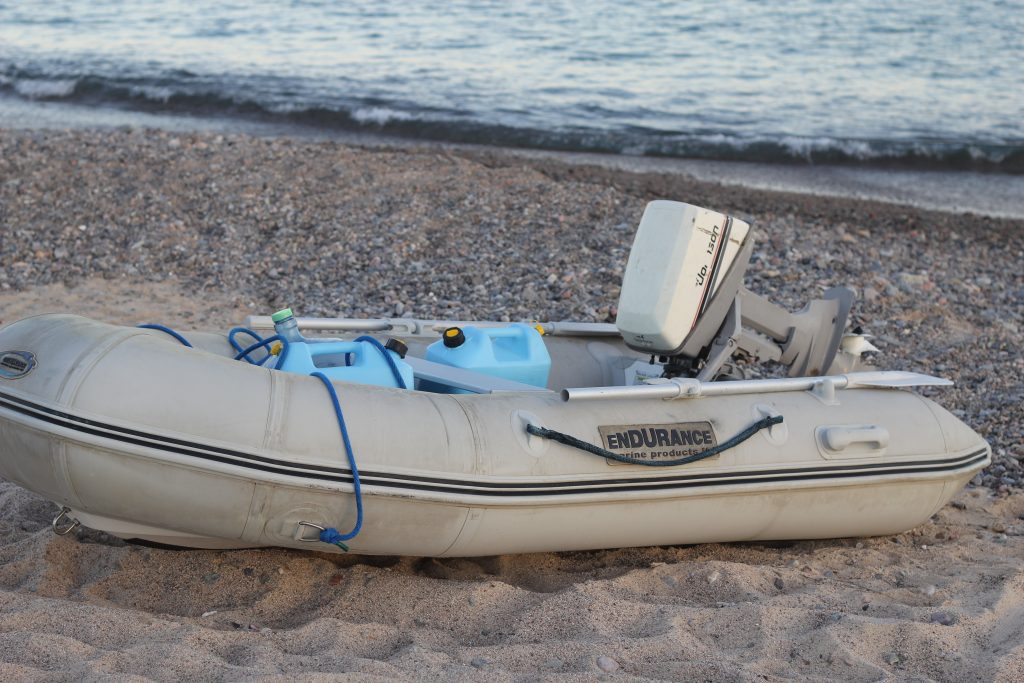
No hauling water
For us, this was by far the greatest benefit of having a watermaker!
While cruising in the US and Canada, we could refill our water tanks at a dock or marina. This was a minor hassle because it involved pulling up the anchor and docking the boat.
In Mexico, it was more challenging to get water. We would fill 5-gallon jugs at the local water purification plant in town and wheel them back to our boat on a collapsible dolly.
It often took a couple of trips with the dolly and dinghy to fill our water tanks. Oh, and we broke our dolly, twice!
We realized that if we wanted to spend more time exploring, and less time hauling water, we would have to invest in a watermaker. When we reached La Paz, Mexico we bought a refurbished watermaker, and we were so glad we did!
Our sailboat water maker gave us the gift of time, especially in places like Mexico and the South Pacific, where there were limited opportunities to fill water tanks up at the docks. It also saved us paying docking and water fees.
We estimate that our boat water maker saved us anywhere from four to six hours every week, time that we could spend exploring the wonderful places we were visiting.
A clean, safe water source
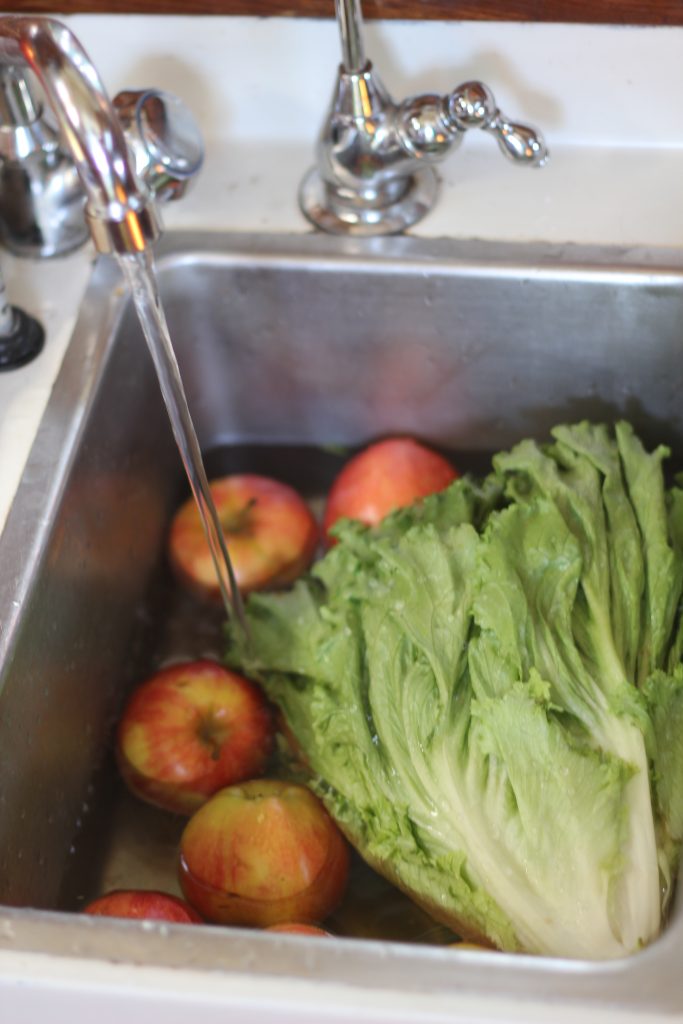
In places where the drinking water may be suspect, a boat water maker can be a reliable source of safe drinking water (assuming it’s in good working condition!).
More time in remote locations
A watermaker is a great tool if you’re drawn to remote locations where you might be the only boat in the anchorage.
It wasn’t until we reached Los Frailes, a secluded village on the Baja, that we really began to think about buying a watermaker.
There we were in an idyllic anchorage, surrounded by spectacular hiking and fishing. There was only one problem—every two days we had to walk 10 miles into town with our water jugs and hope that some kind samaritan would give us a lift back to our boat.
Before having a watermaker, we’d often leave a place we loved just because we needed to fill up our tanks. With a watermaker, we were more self-sufficient and could stay an extra few days, or as long as we wanted!
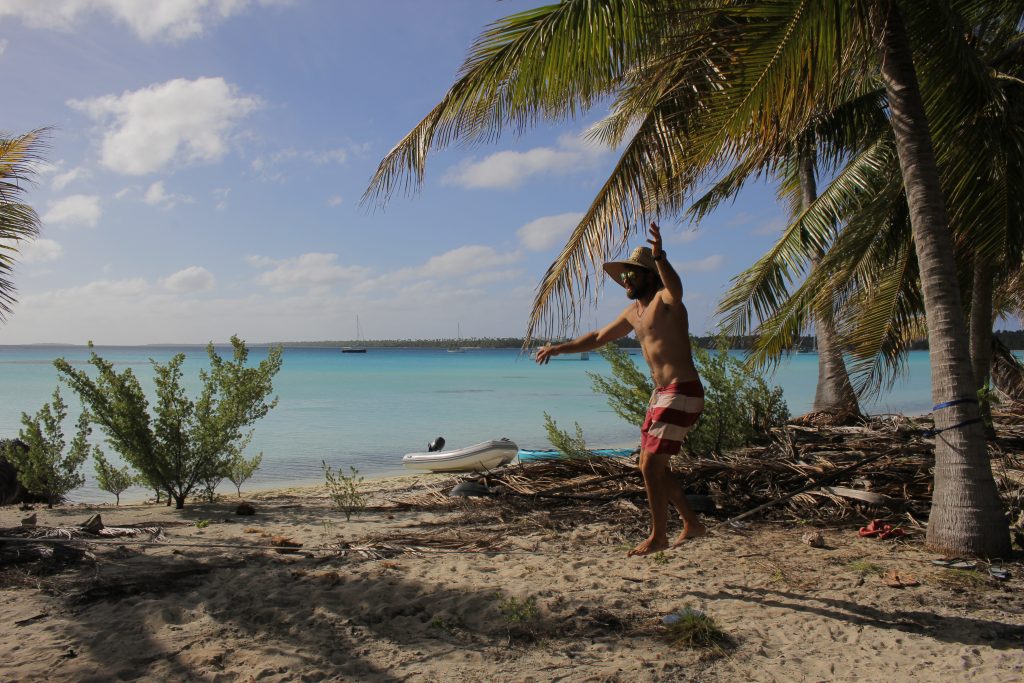
The number one drawback is the cost. We were able to find a refurbished water desalinator for $3,000, which was a great deal but also a considerable slice out of our cruising kitty.
How much does a watermaker cost?
Powered desalination systems for your average recreational cruising boat range from around 3,500 USD to 11,000 USD, with the more expensive options offering higher production (gallons of fresh water per hour).
Ongoing maintenance
Watermakers are yet another piece of boat equipment that needs to be maintained.
The majority of watermaker problems are caused by not using it enough or not using it properly.
If a watermaker is not used for a few weeks, the planktonic organisms in the seawater will die, rot, and clog the membrane and filters. This can eventually damage the reverse osmosis membrane in the watermaker.
For this reason, boat water makers should be used frequently and regularly flushed with fresh water.
Watermaker flushing
Check your manufacturer’s instructions on how to flush.
Rainman recommends flushing the seawater out of the system with fresh water if you are not using the system for more than a day or two. After another week, you need to freshwater flush the system again or pickle it for long-term storage.
Of course, it’s easy to forget, so we made it a rule to freshwater flush our watermaker after every use.
This is one good reason to choose a watermaker with an output that will meet your water consumption needs but not exceed them. If you’re using it every second day, you won’t have to try and remember whether you’ve flushed it or not.
Flushing a watermaker is relatively simple but it does involve a bit of work. We used a system with buckets of fresh water to flush our system and it generally took about 5 minutes.
You can also buy systems that automatically flush your watermaker at pre-determined times—even when you’re away from the boat (more on autoflush systems below).
Whatever you do, don’t use chlorinated water to flush as it will destroy reverse osmosis membranes. It’s possible to buy a carbon filter to remove chlorine from water sources at the dock.
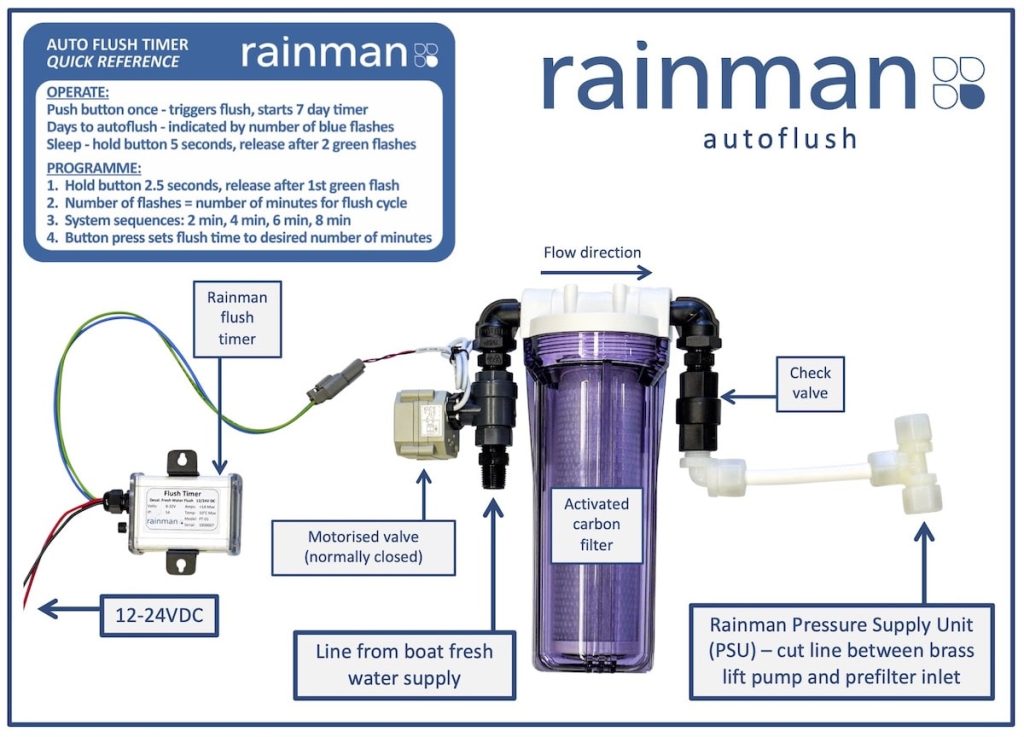
Pickling a watermaker
If you don’t plan on using your watermaker for a while it needs to be “pickled” with a special biocide to prevent growth and buildup which could render your reverse osmosis membrane totally useless.
A watermaker should also be pickled every so often to chemically cleanse the membrane.
In addition to flushing and pickling, you will also need to clean out and replace the raw water pre-filters.
Operating costs
When properly cared for, a membrane should last five to ten years. If you don’t properly flush or pickle your watermaker, it can be a lot sooner and membranes aren’t cheap, generally costing in the range of 200-700 USD.
You’ll also need to purchase pre-filters and pickling solution, which are generally quite affordable. It’s also a good idea to carry spare parts
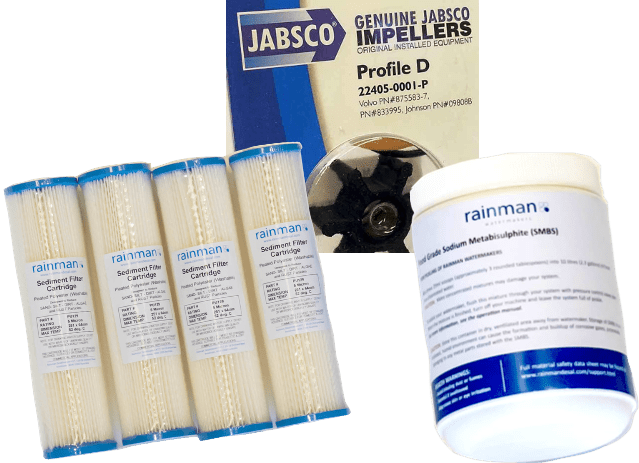
Power consumption
Watermakers can be real power hogs. When Practical Sailor tested a dozen DC watermakers they found they could draw anywhere from 12 to 48 watts per gallon, a huge range in efficiency!
According to Practical Sailor, “for maximum efficiency none of the systems drawing 15 amps or more should be operated without running the engine at the same time.”
We had to run our engine for hours to fill our tanks, which was annoying (and loud) when we were hanging out at anchor and also used up another finite resource—diesel fuel.
In our view, this was the single largest drawback to having a watermaker aboard.
Keep in mind that your power supply will determine what type of watermaker you buy. You may need to upgrade your electrical panels, get a generator or high-powered alternator, add solar panels, or increase battery capacity to supply the demand.
You can’t make water everywhere
While watermakers offer great flexibility and freedom, you can’t just make water in any old spot. If you make water in a polluted marina or anchorage, you’ll risk clogging up your filter. Most cruisers will head out to open water to ensure the saltwater they’re using is as clean as possible.

Key features to look for
Powered or handpump, handpump watermakers.
Handpump watermakers tend to be small and portable, the perfect thing to keep in your ditch bag in the event of an emergency. They’re less expensive than powered watermakers and produce far less water, usually around one gallon per hour.
Though I do know cruisers who have used a handpump watermaker for everyday use, they typically tend to be kept aboard for survival situations.
Powered watermakers
Powered watermakers run off your electrical supply or engine and can produce tens of gallons of water per hour. They tend to be a lot more expensive, but they’re productive enough to replenish your tanks.
Electric or engine drive
Powered watermakers can be electrically driven, by AC or DC, or run off the boat engine.
AC watermakers
AC models can produce in the range of 20-60 gph and are ideal for cruisers with an AC generator or alternator on board. They can also be used on boats with ample solar or wind sources and an inverter.
DC watermakers
DC watermaker systems typically produce in the range of 10-30 gph and are ideal for boats with solar power or 12V battery power.
Engine-driven watermakers
On an engine-driven watermaker, the high-pressure pump is belt-driven. These can produce a considerable amount of water, even on small engines. For instance, engine-driven units produce between 20-60gph, twice what a DC unit can produce.
Energy recovery watermaker
DC watermakers have become more efficient in recent years thanks to energy recovery systems (ERS). When the water leaves the watermaker it is still under pressure. ERS uses a set of valves to make use of this excess pressure to help drive the pump, which can reduce energy consumption by as much as 80 percent.
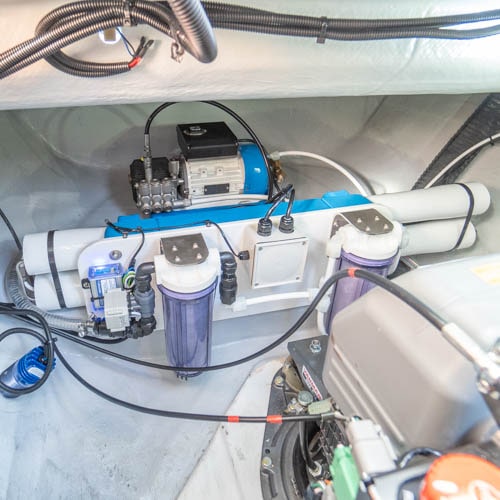
Modular, self-contained, and portable watermakers
Watermakers can be bought as modular, self-contained, and portable units. Choosing the right one may depend on your boat size and layout and whether you’re comfortable installing the watermaker yourself.
Modular units
Modular units come as several separate components that you can mount and connect yourself. This obviously offers a lot more flexibility and is particularly useful on smaller vessels where you may not have a lot of space. The downside is that these systems will take longer to install.
Self-contained units
Self-contained units arrive pre-assembled. While easier to install, they’re often bulkier and best suited to a bigger cruising sailboat with a large engine room.
Portable watermakers
Portable watermaker systems, like the Rainman watermakers, are entirely self-contained. Their compact design makes them easy to move and stow and you can completely avoid a permanent installation.
Simply put the intake and brine discharge hoses overboard, the freshwater hose in your water tank and you’ll be making water in no time.
If you race, have multiple boats, or plan on selling your boat, a portable watermaker is a great option because it can be easily moved from boat to boat.
If we were to buy another watermaker, we would probably opt for a portable one.
Automatic flushing systems
Automatic flushing systems use your boat’s freshwater supply to flush the watermaker for several minutes every few days. These systems require additional components (e.g., a timer, carbon filters, and a motorized valve) and installation but they take a lot of the maintenance out of having a watermaker onboard.
Automatic Pressure Regulation and adjustable pump speed
Your watermaker’s efficiency will be affected by the temperature and salinity of the water you’re cruising in. Cold and highly saline waters (e.g., in the high latitudes) will be more work for your watermaker, so it will take longer to purify.
Some units feature Automatic Pressure Regulation (APR) and adjustable pump speed which can help compensate for fluctuations in water temperature and salinity.
Remote control panels
Some watermakers have the option of a control panel which allows for easier access and remote control. Control panels tend to have a fairly simple interface with just a few gauges but may include a salinity sensor—so you can keep tabs on water quality—and auto-flush integration—so you can flush your watermaker with the flip of a switch.
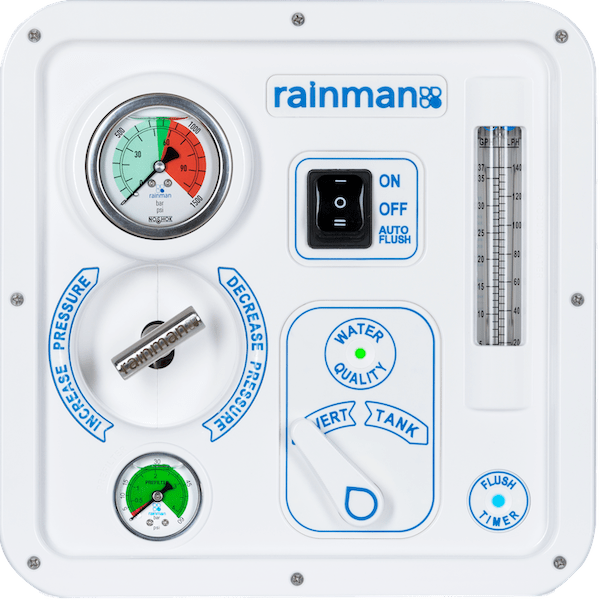
Top watermaker brands
If you’re considering buying a watermaker for a boat, here are some of the top brands to consider.
- Cruise RO Watermaker
- Echotec watermakers
- Horizon Reverse Osmosis (HRO)
- Sea Recovery watermakers
- Schenker watermakers
- Spectra watermakers
Fiona McGlynn is an award-winning boating writer who created Waterborne as a place to learn about living aboard and traveling the world by sailboat. She has written for boating magazines including BoatUS, SAIL, Cruising World, and Good Old Boat. She’s also a contributing editor at Good Old Boat and BoatUS Magazine. In 2017, Fiona and her husband completed a 3-year, 13,000-mile voyage from Vancouver to Mexico to Australia on their 35-foot sailboat.
Terms and Conditions - Privacy Policy
Sailboat Watermakers

It is not uncommon for people that want to take part in the sailing lifestyle to spend a lot of time out at sea. Since these boats are powered by renewable energy sources, they do not have the limitations of boats powered by fossil fuels. However, if a sailor is going to be out at sea for an extended period of time, they are going to need desalination appliances. Desalination is the process of making salt water drinkable. If you are looking for a sailboat watermaker, our marine desalination systems are the best option for you. Continue reading below to learn more from our experienced professionals.
What Are the Best Watermakers for Sailboats?
Sailboats come in many shapes and sizes, which means that there is no one correct sailboat desalinator for sale. In fact, when choosing a watermaker for your sailboat, consider factors such as capacity, energy efficiency, ease of installation and maintenance, and compatibility with your boat’s electrical system. It’s also important to choose a reliable and reputable brand like ECHOTec Watermakers with a good track record of customer support and service. Some of our most popular options for sailboat watermakers include the following:
- 12/24v DC Economy Watermakers
- 12 – 180v DC Watermakers
- Belt-Driven DC Watermakers (Modular)
- 115/230v AC Economy Watermakers
What Are the Benefits of Desalinators for Sailboats?
If you are wondering what exactly the benefits of using desalinators for sailors are, we are here to answer your questions. These include the self-sufficiency it would give sailors that want to take part in the liveaboard lifestyle. Our products are designed to be as easy to use and convenient as possible. Perhaps one of the most pertinent benefits of using a desalinator of this kind is that it provides a virtually unlimited supply of water. On the other hand, sailors that do not have a watermaker will need to rely on buying bottled water whenever they run out. This allows them to enjoy sailing without having to go to shore to buy new bottled water. Even if the person aboard the sailboat is not exactly living on the sailboat, a watermaker for yachts or sailboats maximizes the amount of time that sailors spend on the water.
How Does Sailboat Desalination Work?
The way that a watermaker works is quite interesting. The steps are the following:
- Seawater is taken in from the ocean through a pump or gravity system.
- The seawater is passed through a pre-filter to remove large particles such as sand, sediment, and other debris.
- The seawater is passed through a high-pressure pump where it passes through the RO membrane.
- The RO membrane allows water molecules to pass through while blocking salt and other contaminants. The resulting fresh water is collected on one side of the membrane, while the concentrated brine solution is discarded on the other side.
More About ECHOTec Watermakers
ECHOTec Watermakers is one of the top suppliers of boat watermakers and desalination systems. Our full selection of products includes both onboard watermakers and on-shore watermakers, and home desalination systems. If you are interested in purchasing one of these products, do not hesitate to contact our watermaker for boats supplier to learn more about what we could offer you today when it comes to sailboat watermakers.
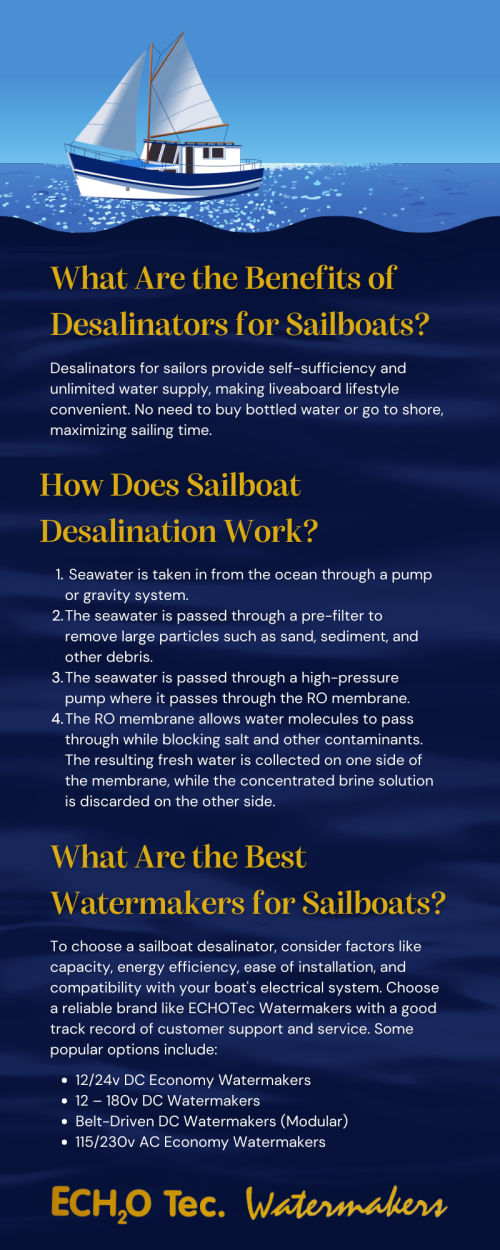

Marine Watermakers

Which model is right for you?
Schenker watermakers are available in 4 models, Wiki, Zen, Smart and Modular.
All units are fitted with an Energy Recovery System , reducing to a minimum the electric consumption. Materials, manufacturing quality and reliability of all 3 models are equivalent, however their features and capacity are different so, which one is right to meet you needs?
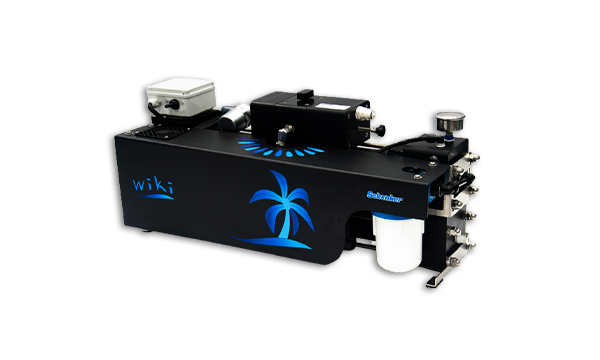
RANGE: 30 LIT/H | GAL/H 7.9
Wiki, term of Hawaiian origin which means "fast, quick". An ideal name for a portable plug-and-play watermaker that can be activated in just a few minutes.
Embrace the freedom of portable drinking water with the compact, Italian-designed Wiki Desalination Unit. Say goodbye to bulky water containers and hello to a more convenient and sustainable solution. Lightweight and easy to use, the Wiki fits into a bag easily stowable in a locker, ensuring clean water wherever you go.

RANGE: 30-50-100-200-300 LIT/H | GAL/H 7.9-13.2-26.4-39.6-53-79
All components are integrated in the main manifolds and there are very few external components like fittings, pipe, valves.
These features make the Zen watermakers very compact , with a special ultra-flat design. Zen in fact is designed to fit into tight spaces and can be installed in every positions, horizontally as well as vertically. Not much bigger than a briefcase!
The Zen are fitted with new generation Energy Recovery Systems that reduce the electric consumption to a minimum.
Zen technology is patented.
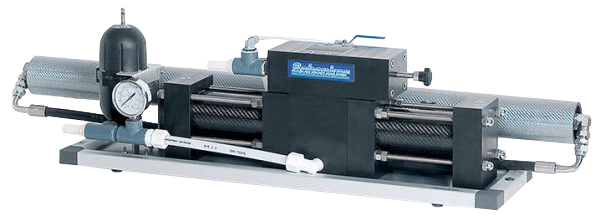
RANGE: 30-60-80-100 LIT/H | GAL/H 7.9-15.8-21-26.4
Light, simple, efficient and affordable.
It is the ideal solution for those who prefer essential systems based on single membranes.
The naked design makes the inspection and maintenance of components very simple.
3 control options available.

RANGE: 35-60-100-150-230-300-500 LIT/H | GAL/H 9-15.8-26.4-39.6-61-79-132
Very compact units based on split membranes.
Large choice of output range ( up to 500 lit/h) to satisfy all needs.
Not sure which is the best solution for you?
Whether you own a sail boat or a big yacht the questions you should ask first are:
Which is the ideal fresh water capacity?
The ideal watermaker should provide the daily fresh water demand of the boat in about 3-4 working hours. On his turn, the daily fresh water demand is based on the number of people onboard and the type of boat. The typical fresh water demand in a sailing boat if about 30-40 lit/day, whereas it is 50 -60 lit/h in a power boat or catamaran. For instance in a sailing boat with a crew of 5 people the estimated daily fresh water demand is 150-200 lit. The ideal watermaker capacity is 50-60 lit/h then.
Which power supply to choose?
All Schenker watermakers are fitted with an Energy Recovery System, and then the electric consumption is very low, either for DC or AC systems. The smaller units, for instance 30 and 50 lit/h are available DC only . The power required is so low that has no sense to consider an AC power. For bigger systems, from 60 to 150 lit/h, are available both DC and AC power supply. If the boat is not fitted with a generator, the choice will be DC, of course. In case a generator is available but used rarely , the DC will be the better choice as well, whereas AC is recommended in case the generator is used extensively. Even for AC system, the low consumption is great advantage as it allow to reduce the size or the load of the generator.
Haven’t found yet what you were looking for?
Contact us, we’ll be glad to support you
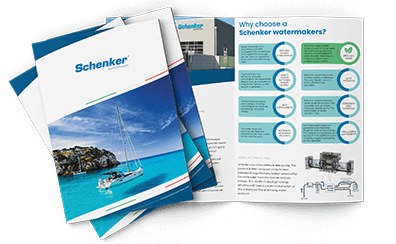
View our products range brochure
Download / View PDF
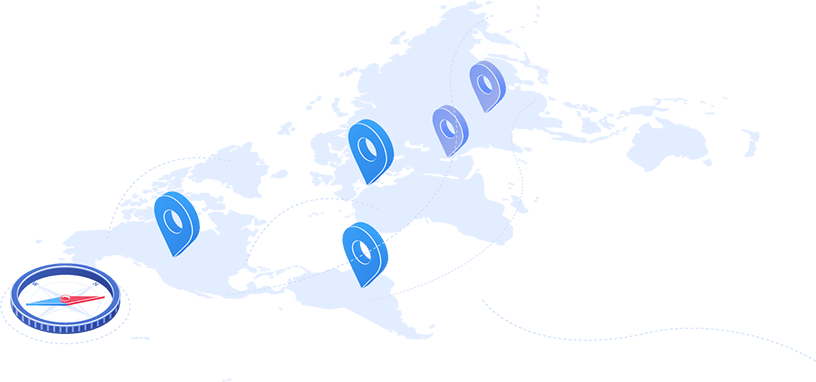
Worldwide dealers
Find schenker dealers near you, send us a message.
Name (required)
Email (required)
Select Your Country (required)
Aruba Afghanistan Angola Anguilla Isole Åland Albania Andorra Emirati Arabi Uniti Argentina Armenia Samoa Americane Antartide Terre Australi e Antartiche Francesi Antigua e Barbuda Australia Austria Azerbaijan Burundi Belgio Benin Bonaire, Sint Eustatius e Saba Burkina Faso Bangladesh Bulgaria Bahrain Bahamas Bosnia Erzegovina Saint-Barthélemy Bielorussia Belize Bermuda Bolivia Brasile Barbados Brunei Darussalam Bhutan Isola di Bouvet Botswana Repubblica Centroafricana Canada Isole Cocos Svizzera Cile Cina Costa d'Avorio Camerun Repubblica Democratica del Congo Congo Isole Cook Colombia Comore Capo Verde Costa Rica Cuba Curaçao Isola di Natale Isole Cayman Cipro Repubblica Ceca Germania Gibuti Dominica Danimarca Repubblica Dominicana Algeria Ecuador Egitto Eritrea Sahara Occidentale Spagna Estonia Etiopia Finlandia Fiji Isole Falkland Francia Isole Faroe Stati Federati della Micronesia Gabon Regno Unito Géorgie Guernsey Ghana Gibilterra Guinea Guadalupa Gambia Guinea-Bissau Guinea Equatoriale Grecia Grenada Groenlandia Guatemala Guyana Francese Guam Guyana Hong Kong Isola Heard e Isole McDonald Honduras Croazia Haiti Ungheria Indonesia Isola di Man India Territorio britannico dell'Oceano Indiano Irlanda Iran, Repubblica Islamica di Iraq Islanda Israele Italia Giamaica Jersey Giordania Giappone Kazakhistan Kenya Kirghizistan Cambogia Kiribati Saint Kitts e Nevis Corea, Repubblica di Kuwait Laos, Repubblica Popolare Democratica del Libano Liberia Libia Santa Lucia Liechtenstein Sri Lanka Lesotho Lituania Lussemburgo Lettonia Macao Saint Martin (Francia) Marocco Monaco Moldavia Madagascar Maldive Messico Isole Marshall Macedonia, ex Repubblica iugoslava di Mali Malta Myanmar Montenegro Mongolia Isole Marianne Settentrionali Mozambico Mauritania Montserrat Martinica Mauritius Malawi Malesia Mayotte Namibia Nuova Caledonia Niger Isola Norfolk Nigeria Nicaragua Niue Paesi Bassi Norvegia Nepal Nauru Nuova Zelanda Oman Pakistan Panama Pitcairn Perù Filippine Palau Papua Nuova Guinea Polonia Porto Rico Corea, Repubblica Popolare Democratica di Portogallo Paraguay Palestina, stato della Polinesia Francese Qatar Reunion Romania Federazione Russa Ruanda Arabia Saudita Sudan Senegal Singapore Georgia Meridionale e Isole Sandwhich Meridionali Sant'Elena, Ascensione e Tristan da Cunha Svalbard e Jan Mayen Isole Solomon Sierra Leone El Salvador San Marino Somalia Saint Pierre e Miquelon Serbia Sudan del Sud Sao Tome e Principe Suriname Slovacchia Slovenia Svezia Swaziland Sint Maarten (parte olandese) Seychelles Siria Isole Turks e Caicos Ciad Togo Tailandia Tagikistan Tokelau Turkmenistan Timor Est Tonga Trinidad e Tobago Tunisia Turchia Tuvalu Taiwan Tanzania Uganda Ucraina Isole Minori degli Stati Uniti d'America Uruguay US East Coast US West Coast Uzbekistan Città del Vaticano Saint Vincent e Grenadine Venezuela Isole Vergini Britanniche Isole Vergini Americane Vietnam Vanuatu Wallis e Futuna Samoa Yemen Sud Africa Zambia Zimbabwe
Message (required)
Security check (required)
Dimostra di essere umano selezionando cuore .
Pursuant to and for the purposes of articles art. 7, 13 and 15 of EU Regulation 2016/679 I declare that I have read the privacy policy of this site and consent to the processing of personal data to receive the answer to my request.*
Main Office
- sunwatermarine
- Dec 8, 2021
5 Best Watermakers for Sailboats
Last Updated by Daniel Wade, October 1, 2021

With the right Watermaker, the ocean becomes an almost immeasurable supply of fresh and clean drinking water to keep you hydrated during your offshore sailing adventures.
Many sailors do spend a lot of their time and money on various parts of the sailboat including the sails, engine, electronics, and generators especially when preparing for long-distance voyages.
While there's absolutely nothing wrong with this, they often overlook one crucial part of general human survival: having an ample supply of fresh drinking water.
Whether you have freshwater drinking tanks on your sailboat or planning to cruise in areas where you can easily access clean drinking water, the hassle involved in having to come to the dock to fill the water tanks can be quite overwhelming.
This is exactly why you need to find the best watermakers for sailboats.
Like many other nautical technologies, watermakers have significantly advanced in the last few decades to become very efficient and more reliable. They're no longer a luxury on your sailboat but a necessity. Better still, watermakers have become relatively affordable and are meant to keep you hydrated as you explore areas that do not have clean and fresh drinking water.
In this article, we'll take a look at how watermaker systems work, highlight their benefits, and highlight the best sailboat watermakers on the market right now. At the end of this read, you should be able to choose the best watermaker for your sailboat.
Benefits of Having a Watermaker on Your Sailboat
The freedom and security that come with having full water tanks on your sailboat are of immense importance, especially if you're cruising in an area where fresh drinking water is hard to come by and quite expensive when you do. As such, having a watermaker aboard your sailboat is no longer a luxury like it used to be in the past. With a steady supply of fresh and clean water, your life on the sailboat will be a lot better. This is because you'll have enough clean water to drink, cook, wash, and shower, which is beneficial if you want to enjoy your sailing adventures.
Honestly speaking, many sailors do not actually need a watermaker. Well, if you're planning to sail just near the shores, then there's a chance that you can easily access fresh and clean water by the dock. But this can be limiting if you've been dreaming of going off the grid and sailing to some exotic and unknown places in the world.
With that in mind, a watermaker makes a lot of sense to most sailors. You won't have to worry about having to carry aboard gallons of freshwater for cooking and drinking during your voyage. You won't have to treat freshwater as a precious commodity that must last until you can refill at the next port. With a watermaker, you can simply go ocean crossing without worrying about running out of water.
A watermaker allows you to have a steady supply of fresh and clean water to keep everybody well-hydrated and healthy. You can clean the water anytime you feel like and all you have to do is replace the filter once in a while and you'll be good to go. In essence, a watermaker is probably one of the most important equipment to have aboard your sailboat, so installing it is of great importance if you're a serious sailor.
The Basics of Modern Marine Watermakers
Modern marine watermakers essentially follow the principle of reverse-osmosis to produce pure, drinking water from seawater. During this process and through very high pressure, seawater is forced through a semipermeable membrane that only allows freshwater molecules to pass through it but not salt, bacteria, or any other organic material. The newly made pure, drinking water is then piped to the sailboat's water tanks while the leftover (brine) is discharged overboard.
Even though marine watermakers may differ in the type of pump that's employed and how it is driven, this is one of the most important features in every watermaker. In most cases, water can be electrically pumped or powered directly off the boat's engine. If you have an AC generator or alternator on your boat, it would make much sense to use the AC output to drive the watermaker directly. You can also choose the DC-powered models if you rely on renewable energy from solar or wind. Alternatively, you can still go for AC-powered watermakers but you'll have to buy an inverter.
All in all, DC-powered watermakers are more efficient since they integrate a power-saving energy recovery system (ERS). You must, however, keep in mind that your energy consumption levels might be quite high if you're sailing in colder and saltier areas. This is because the water purification process might be a bit slower in such areas. As such, you should consider investing in a more high-powered watermaker system if you will be sailing in colder and saltier areas than if you're planning to sail more in warm and less salty areas.
As far as an engine-driven watermaker is concerned, you should mount the high-pressure pump on the engine so that it can be belt-driven using an automatic clutch. An engine-driven watermaker should be your first option if you want large quantities of fresh drinking water. This is more productive than AC or DC-powered watermakers. Even with a relatively small engine, this setup has an automatic regulator that constantly pumps the water. With that in mind, engine-driven watermakers are ideal if you want to reduce your energy consumption. To put it into perspective, an engine-driven watermaker can lower energy consumption by an enormous 80%, especially when compared with conventional AC or DC-powered watermaker systems.
How to Choose the Best Watermaker for Your Sailboat
There are many factors to consider when looking for the best watermakers for your sailboat. Here are the most important things to consider.
Your Freshwater Needs
One of the most important things to consider before spending your money on a watermaker is your freshwater needs. What quantity would be enough to keep you going on your sailing adventure? While the quantity might differ from one sailor to the other or from one boat to the other, you should consider the number of gallons that a particular watermaker can produce per day. This will help you in choosing the ideal watermaker; a model that will ensure that you never run out of water. Do not underestimate your water needs, especially if you're planning to sail with your children or if you're planning to stay on the boat for an extended period of time.
Do you have enough space on your vessel to accommodate the type of watermaker you're looking to buy? While most watermakers are designed to fit in the smallest of space, you should consider the actual size of the watermaker and find out whether you have enough space on your vessel to fix it.
Watermakers can run on electricity, renewable energy such as wind and solar (if you have them on your vessel), or both. When looking for the perfect watermaker, you should consider how to power it and whether or not the watermaker has low-energy consumption, which is definitely a great feature. Again, there are also engine-driven watermakers, so it's important to know exactly what you're going for.
Maintenance
Watermakers have a reputation for being difficult to maintain. Fortunately, the equipment and components have improved in the last few years so you should go for a model that's easy to maintain. You should use the watermaker in water bodies that look good, You should avoid using the watermaker in dirty harbors as you may have to change the filters every so often or even damage your watermaker altogether.
Best Watermakers for Sailboats
Let's take a look at the best watermakers available on the market right now.
The Ultra Whisper

Engineered by limited electrical options that can run on either DC or AC, THE Ultra Whisper by Sea Recovery is one of the best watermakers currently available on the market. In addition to being very quiet, this watermaker features an automatic operation that requires very minimal operator adjustment.
This watermaker is ideal for small powerboats and sailboats since it can serve as an efficient water supply. This model boasts about a 75% reduction in power consumption, especially when compared to other models.
Smooth and quiet water production
Can produce up to 2,280 liters per day
Ideal for small boats
It is energy efficient
It might not be perfect for large boats
Echotec Watermaker

If you want a watermaker model that can produce 60 liters per hour flawlessly and with no maintenance apart from changing the filters, look no further than the Echotec Watermaker. This model is designed for ultra-reliable performance and easy customer installation.
This watermaker is made from high-quality components that can withstand the continuous harsh marine environment, making it one of the most durable watermakers on the market. This is essentially a series of modular watermakers ranging from 12-volt to 24-volt DC-powered models. They bring forth energy efficiency, a computerized energy recovery system, and ultimate reliability to ensure that you never run out of fresh drinking water while out there on the sea.
Energy efficient
Cost-effective
Comes with a very low speed
Not ideal for large boats
Spectra Katadyn PowerSurvivor

As a compact and energy-efficient watermaker, the Spectra Katadyn PowerSurvivor is arguably the most affordable watermaker currently available on the market. We are talking about a model that only requires 4 amps to desalinate water for your sailboat. It can produce 1.5 gallons of fresh drinking water per hour, which is an excellent return for a watermaker of its size.
It is also one of the most portable watermakers around. You can choose to either install it permanently or temporarily in case you want to take it somewhere else. This portability is also essential if you're looking for a space-saving model that can fit in the smallest of compartments. Its simple but rugged design is essential in ensuring that it can perform at its best even in harsh marine conditions. In terms of its power capabilities, this is the only model on the market that will convert to a hand-operated system or manual power if there's a power shortage.
Portable and lightweight
Rugged design to withstand harsh marine environments
Efficient and reliable
Can revert to manual power if there's a power shortage
Perfect for off-grid sailing
Gasoline or diesel can easily damage the semi-permeable membrane
Village Marine - Little Wonder Series

Whether you're looking for a watermaker for your small sailboat or looking for a watermaker that can efficiently serve those huge yachts, the Village Marine Little Wonder Series provides everything. This model is meant for experienced sailors who are looking for various capacity options. This watermaker weighs just about 69 pounds but can produce nearly 180 gallons of fresh drinking water each day.
Designed with a low RPM high-pressure pump, this model remains one of the most efficient and economical watermakers on the market. That's not all; this watermaker is designed with corrosion-resistant features and is one of the most serviceable watermakers in the game. It is reliable, quiet, and portable; all factors that make a watermaker great.
Easy to operate
Corrosion-resistant
Easy to maintain
Quiet and versatile
It doesn't have automatic adjustment controls
Ventura 150 Watermaker

This is one of the most versatile watermakers on the market. It can use both electricity and renewable energy. This model is engineered to be lightweight and energy-efficient and its compact and modular design makes it a great option if you're looking for a watermaker that's easy to use and install in confined spaces.
The Ventura 150 watermaker is highly efficient as it can produce over 6 gallons of water an hour, which makes it quite perfect for small vessels. This sailboat watermaker features a controller that allows you to operate and monitor the device remotely. It also has the auto store button that will automatically flash the system after every five days.
This watermaker is quiet and surprisingly compact despite its ability to produce about 150 gallons of water per day. It also gives you the option of going for the automated manual or manual model.
Very versatile
Can use both electricity and renewable energy power
It is smooth and quiet
It is compact and lightweight
The manual model has analog controls
To this end, it's easy to see that having an ideal watermaker aboard your vessel is one of the first crucial steps towards being self-sufficient and sustainable. With a watermaker, you'll be able to access fresh drinking water at all times when sailing even in far-flung places. Most of these models are well-constructed and incorporate some of the best technologies that make them efficient, reliable, and easy to install, use, and maintain.
So when it comes to choosing the best watermaker for your sailboat, it may all come down to what is ideal for you in terms of energy consumption, efficiency, the quantity of water produced, among many other things. With an ideal watermaker, you can remain off the grid for as long as you want without ever worrying about running out of water and this is of great importance in enjoying your sailing adventures.
Recent Posts
James Richmond on bluedotliving.com
Flanigan's Eco-Logic Convo Featuring James Richmond
Horsepower VS. Torque
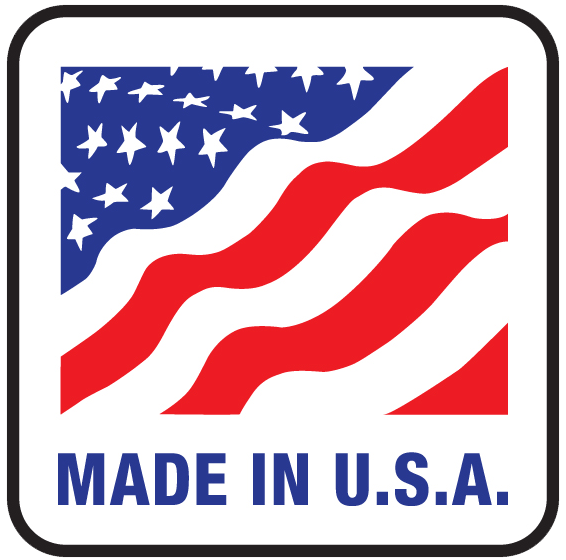
Our products are proudly manufactured here in Fort Lauderdale, Florida USA!
- Afghanistan (USD $)
- Åland Islands (USD $)
- Albania (USD $)
- Algeria (USD $)
- Andorra (USD $)
- Angola (USD $)
- Anguilla (USD $)
- Antigua & Barbuda (USD $)
- Argentina (USD $)
- Armenia (USD $)
- Aruba (USD $)
- Ascension Island (USD $)
- Australia (USD $)
- Austria (USD $)
- Azerbaijan (USD $)
- Bahamas (USD $)
- Bahrain (USD $)
- Bangladesh (USD $)
- Barbados (USD $)
- Belarus (USD $)
- Belgium (USD $)
- Belize (USD $)
- Benin (USD $)
- Bermuda (USD $)
- Bhutan (USD $)
- Bolivia (USD $)
- Bosnia & Herzegovina (USD $)
- Botswana (USD $)
- Brazil (USD $)
- British Indian Ocean Territory (USD $)
- British Virgin Islands (USD $)
- Brunei (USD $)
- Bulgaria (USD $)
- Burkina Faso (USD $)
- Burundi (USD $)
- Cambodia (USD $)
- Cameroon (USD $)
- Canada (USD $)
- Cape Verde (USD $)
- Caribbean Netherlands (USD $)
- Cayman Islands (USD $)
- Central African Republic (USD $)
- Chad (USD $)
- Chile (USD $)
- China (USD $)
- Christmas Island (USD $)
- Cocos (Keeling) Islands (USD $)
- Colombia (USD $)
- Comoros (USD $)
- Congo - Brazzaville (USD $)
- Congo - Kinshasa (USD $)
- Cook Islands (USD $)
- Costa Rica (USD $)
- Côte d’Ivoire (USD $)
- Croatia (USD $)
- Curaçao (USD $)
- Cyprus (USD $)
- Czechia (USD $)
- Denmark (USD $)
- Djibouti (USD $)
- Dominica (USD $)
- Dominican Republic (USD $)
- Ecuador (USD $)
- Egypt (USD $)
- El Salvador (USD $)
- Equatorial Guinea (USD $)
- Eritrea (USD $)
- Estonia (USD $)
- Eswatini (USD $)
- Ethiopia (USD $)
- Falkland Islands (USD $)
- Faroe Islands (USD $)
- Fiji (USD $)
- Finland (USD $)
- France (USD $)
- French Guiana (USD $)
- French Polynesia (USD $)
- French Southern Territories (USD $)
- Gabon (USD $)
- Gambia (USD $)
- Georgia (USD $)
- Germany (USD $)
- Ghana (USD $)
- Gibraltar (USD $)
- Greece (USD $)
- Greenland (USD $)
- Grenada (USD $)
- Guadeloupe (USD $)
- Guatemala (USD $)
- Guernsey (USD $)
- Guinea (USD $)
- Guinea-Bissau (USD $)
- Guyana (USD $)
- Haiti (USD $)
- Honduras (USD $)
- Hong Kong SAR (USD $)
- Hungary (USD $)
- Iceland (USD $)
- India (USD $)
- Indonesia (USD $)
- Iraq (USD $)
- Ireland (USD $)
- Isle of Man (USD $)
- Israel (USD $)
- Italy (USD $)
- Jamaica (USD $)
- Japan (USD $)
- Jersey (USD $)
- Jordan (USD $)
- Kazakhstan (USD $)
- Kenya (USD $)
- Kiribati (USD $)
- Kosovo (USD $)
- Kuwait (USD $)
- Kyrgyzstan (USD $)
- Laos (USD $)
- Latvia (USD $)
- Lebanon (USD $)
- Lesotho (USD $)
- Liberia (USD $)
- Libya (USD $)
- Liechtenstein (USD $)
- Lithuania (USD $)
- Luxembourg (USD $)
- Macao SAR (USD $)
- Madagascar (USD $)
- Malawi (USD $)
- Malaysia (USD $)
- Maldives (USD $)
- Mali (USD $)
- Malta (USD $)
- Martinique (USD $)
- Mauritania (USD $)
- Mauritius (USD $)
- Mayotte (USD $)
- Mexico (USD $)
- Moldova (USD $)
- Monaco (USD $)
- Mongolia (USD $)
- Montenegro (USD $)
- Montserrat (USD $)
- Morocco (USD $)
- Mozambique (USD $)
- Myanmar (Burma) (USD $)
- Namibia (USD $)
- Nauru (USD $)
- Nepal (USD $)
- Netherlands (USD $)
- New Caledonia (USD $)
- New Zealand (USD $)
- Nicaragua (USD $)
- Niger (USD $)
- Nigeria (USD $)
- Niue (USD $)
- Norfolk Island (USD $)
- North Macedonia (USD $)
- Norway (USD $)
- Oman (USD $)
- Pakistan (USD $)
- Palestinian Territories (USD $)
- Panama (USD $)
- Papua New Guinea (USD $)
- Paraguay (USD $)
- Peru (USD $)
- Philippines (USD $)
- Pitcairn Islands (USD $)
- Poland (USD $)
- Portugal (USD $)
- Qatar (USD $)
- Réunion (USD $)
- Romania (USD $)
- Russia (USD $)
- Rwanda (USD $)
- Samoa (USD $)
- San Marino (USD $)
- São Tomé & Príncipe (USD $)
- Saudi Arabia (USD $)
- Senegal (USD $)
- Serbia (USD $)
- Seychelles (USD $)
- Sierra Leone (USD $)
- Singapore (USD $)
- Sint Maarten (USD $)
- Slovakia (USD $)
- Slovenia (USD $)
- Solomon Islands (USD $)
- Somalia (USD $)
- South Africa (USD $)
- South Georgia & South Sandwich Islands (USD $)
- South Korea (USD $)
- South Sudan (USD $)
- Spain (USD $)
- Sri Lanka (USD $)
- St. Barthélemy (USD $)
- St. Helena (USD $)
- St. Kitts & Nevis (USD $)
- St. Lucia (USD $)
- St. Martin (USD $)
- St. Pierre & Miquelon (USD $)
- St. Vincent & Grenadines (USD $)
- Sudan (USD $)
- Suriname (USD $)
- Svalbard & Jan Mayen (USD $)
- Sweden (USD $)
- Switzerland (USD $)
- Taiwan (USD $)
- Tajikistan (USD $)
- Tanzania (USD $)
- Thailand (USD $)
- Timor-Leste (USD $)
- Togo (USD $)
- Tokelau (USD $)
- Tonga (USD $)
- Trinidad & Tobago (USD $)
- Tristan da Cunha (USD $)
- Tunisia (USD $)
- Türkiye (USD $)
- Turkmenistan (USD $)
- Turks & Caicos Islands (USD $)
- Tuvalu (USD $)
- U.S. Outlying Islands (USD $)
- Uganda (USD $)
- Ukraine (USD $)
- United Arab Emirates (USD $)
- United Kingdom (USD $)
- United States (USD $)
- Uruguay (USD $)
- Uzbekistan (USD $)
- Vanuatu (USD $)
- Vatican City (USD $)
- Venezuela (USD $)
- Vietnam (USD $)
- Wallis & Futuna (USD $)
- Western Sahara (USD $)
- Yemen (USD $)
- Zambia (USD $)
- Zimbabwe (USD $)
- Portable Watermaker Lithium Powered
- Portable Watermaker AC Powered
- Portable Watermakers
+1-954-800-8800
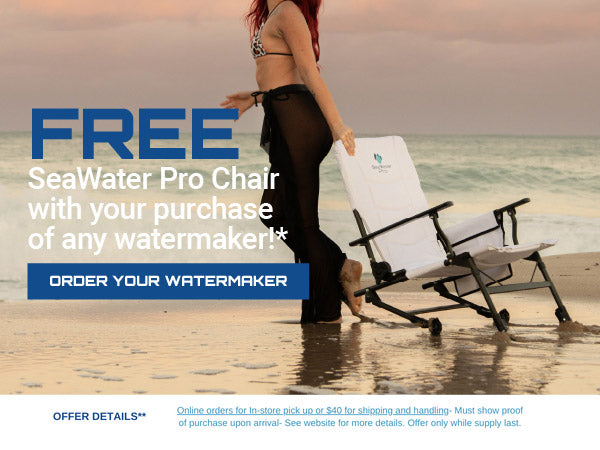
Offer Details*: Online orders available for in-store pick up or $40 shipping fee. Must show proof of purchase upon arrival. Offer only while supply lasts.
Collection: portable watermakers and parts.
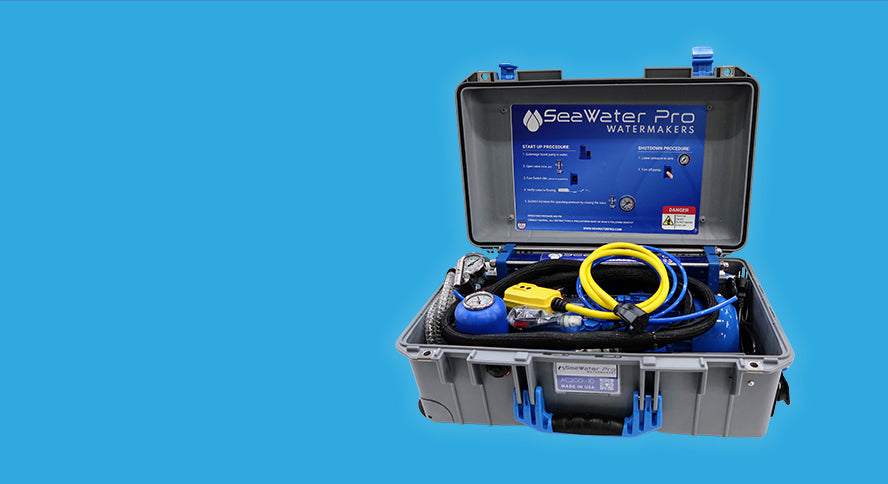
Showing 5 of 5 products
- In stock (3)
- Out of stock (2)
Filter and sort
Up to $7,995.00
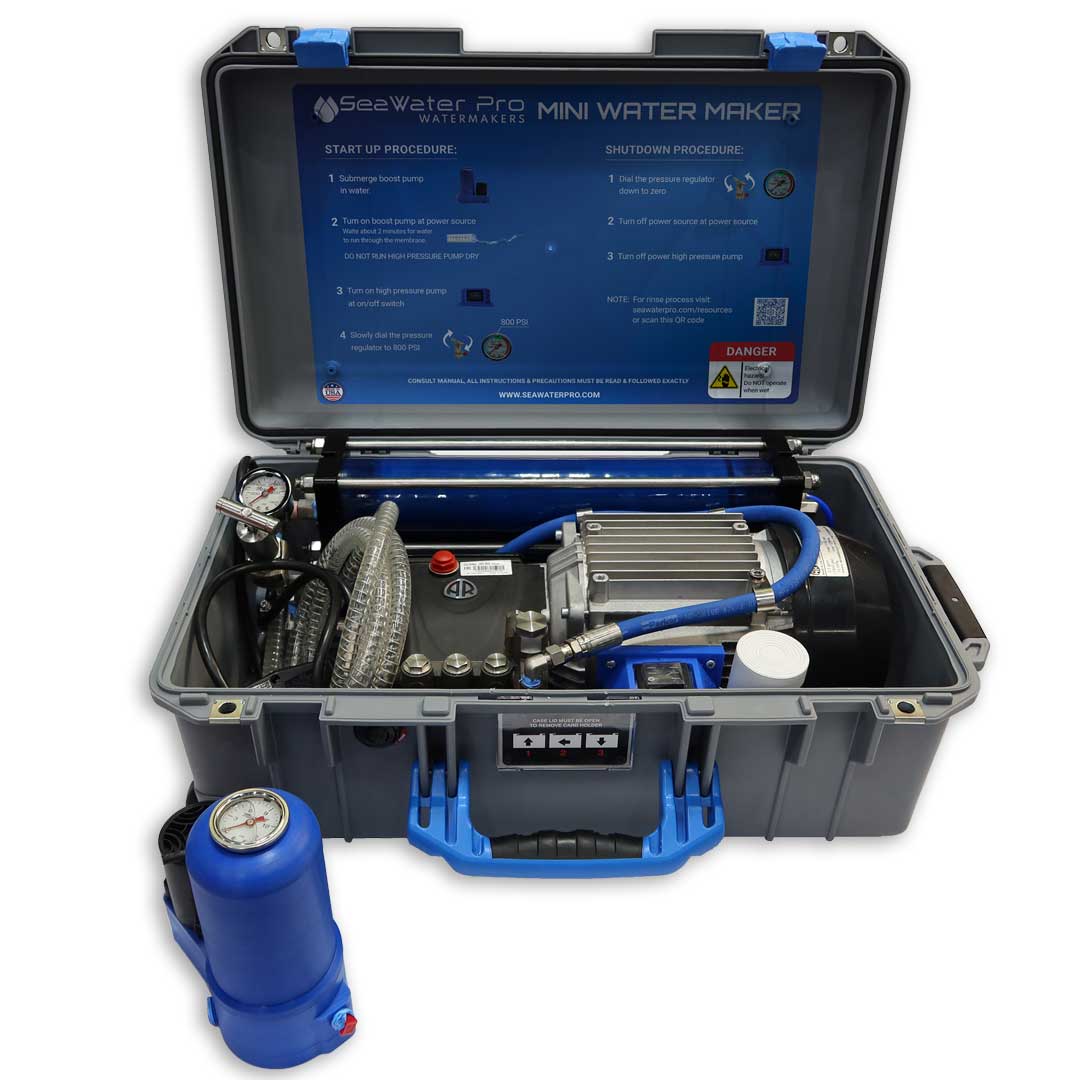
Mini Portable Watermaker AC Powered
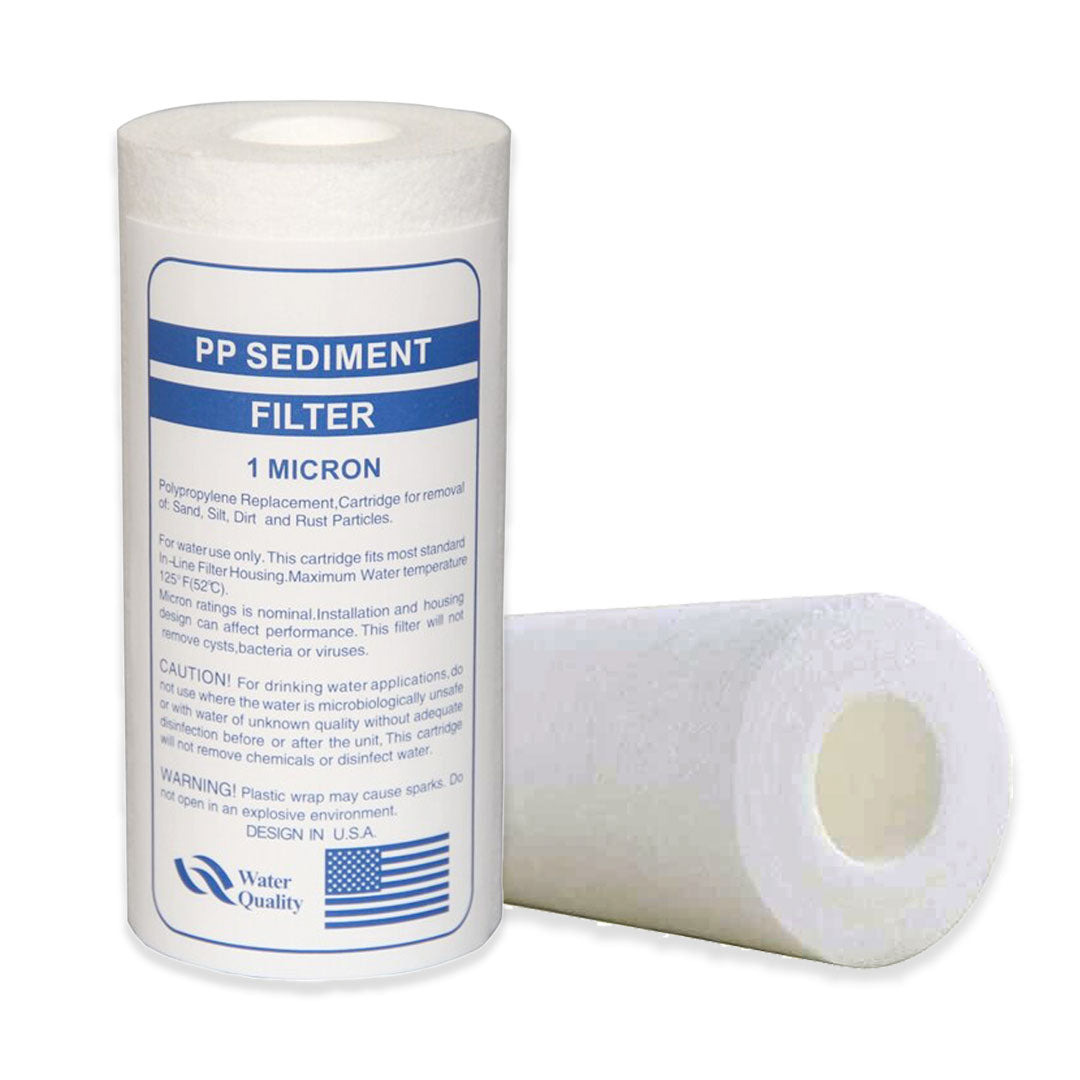
Pre-Filter Kit: 10 pack
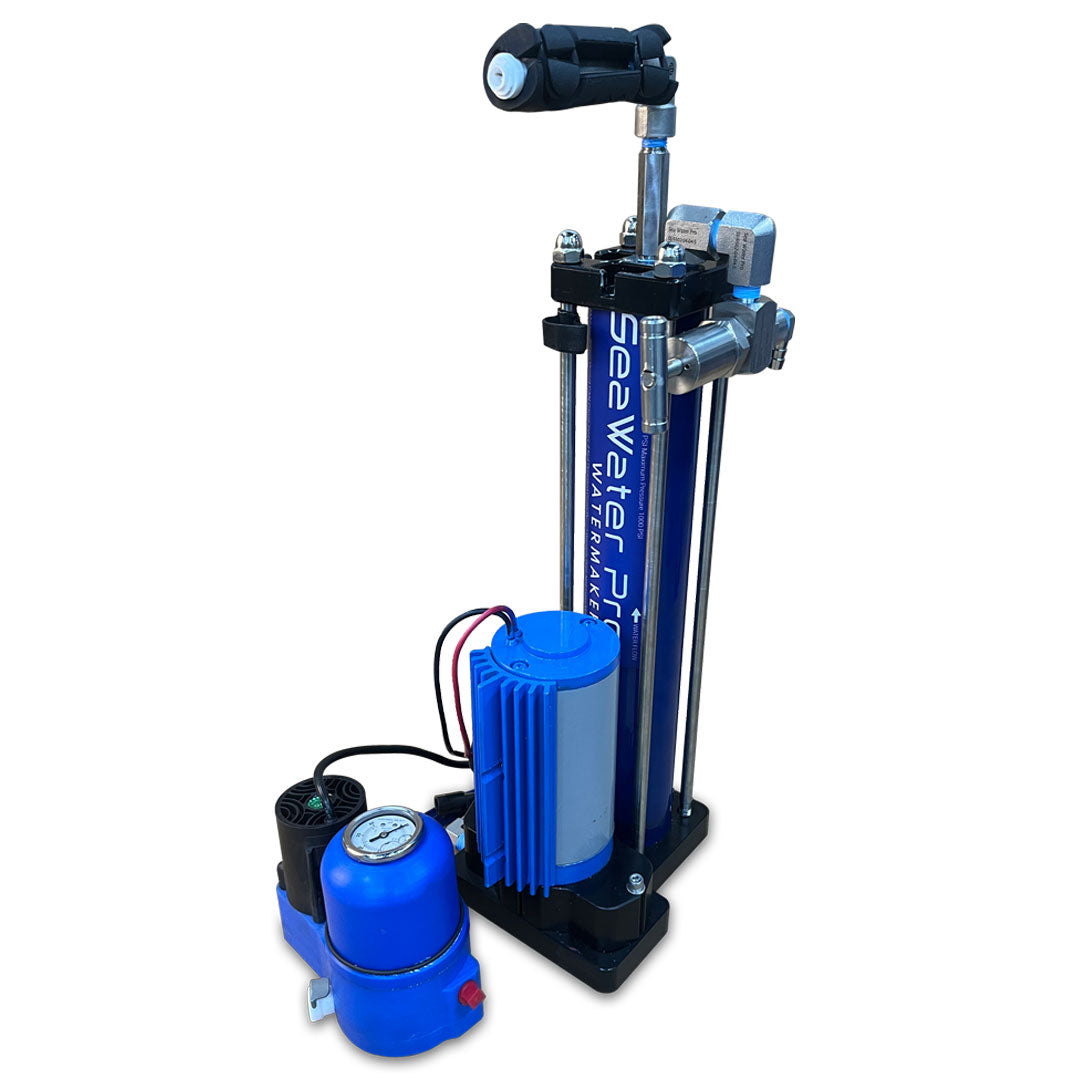
SeaWater Pro Micro Water Maker®
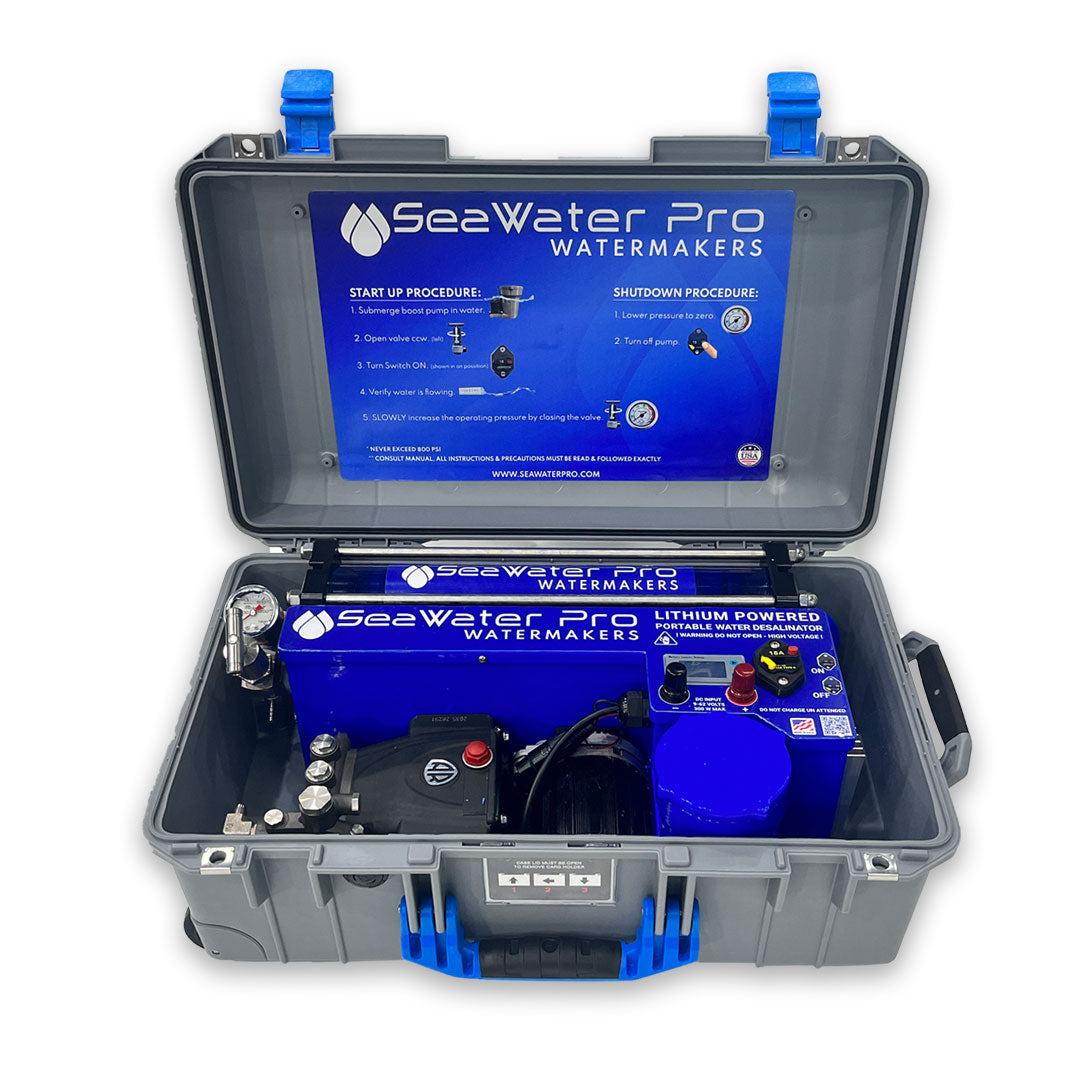
Mini Portable Watermaker Lithium Powered
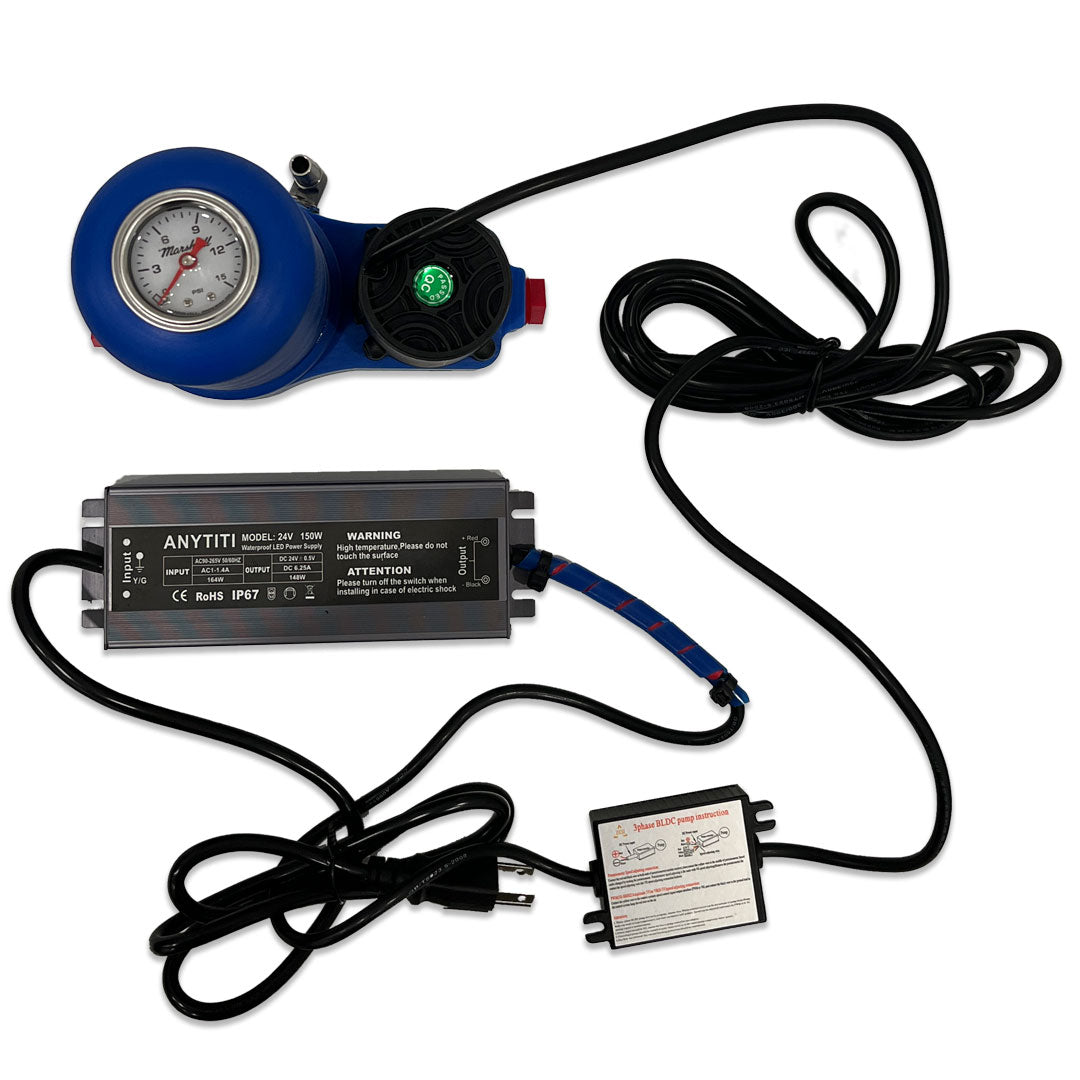
Mini Boost Pump Housing for Portable Mini Watermaker
Seawater pro dual-membrane.

DOW Filmtec 40" SW30-2540 Reverse Osmosis Membrane

High-Pressure Pump 20GPH or 40GPH

Remote Control Panel 4 colors

Boost Pump, Two stage, 30 psi, 500 GPH (1)

Pre Filter Housing for SeaWater Pro Modular Watermakers

Automatic Rinse Timer (1)
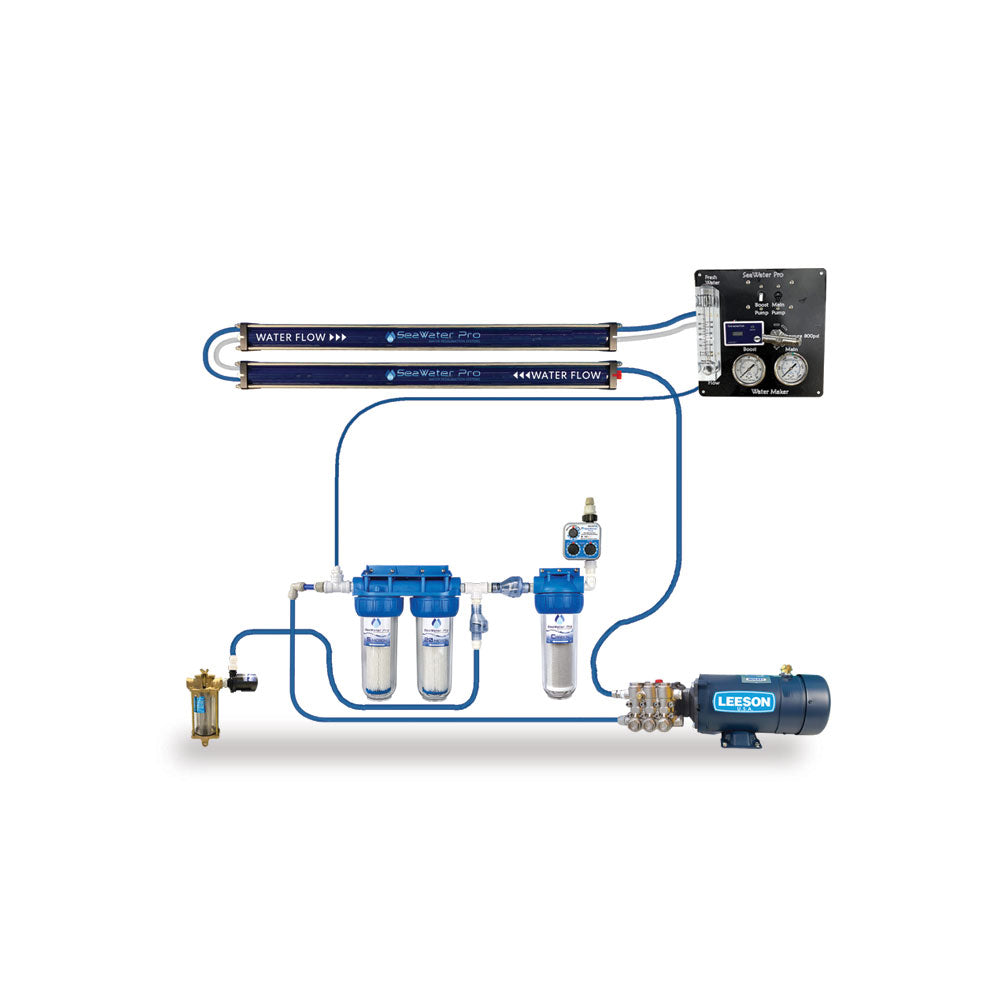
Popular Parts

3-Way Sampler Diverter Valve for Freshwater (1)

Boost Pump AC/DC Power Supply

Check Valve, clear PVC, 1/2" NPT female (1)

DOW Filmtec 14" SW30-2514 for Mini Watermaker

Elbow Fitting: 3/8" x 3/8" fresh water OD push to connect (1)

Fitting: 1/2" pipe thread x 1/2" OD for blue tubing (3)

Fitting: 1/4" male x 1/4" male, 3" long, 316 stainless (1)

Fitting: 1/4" Straight Adaptor, female to male (1)

Fitting: 15mm to 1/2 Inch OD Fitting (1)

Fitting: 15mm to 3/8 inch OD Fitting (1)

Fitting: 316 stainless 1/4 male to male (1)

Fitting: 90° elbow plus 1/4 push to connect (1 set)

Fitting: Elbow 1/2" x 1/2" Push to connect (1)

Fitting: Elbow 1/4" NPT x 3/8" male for high pressure hose (1)

Fitting: flow meter adapter (1)

Fitting: NPT 1/2" female x 1/2" push to connect (1)

Fitting: NPT 1/4" x 1/4” x 1/4” female for high pressure hose (1)

Fitting: NPT 1/4" x 3/8" male high pressure hose fitting

Fitting: NPT Fitting: 1/2” male to male, (3)

Fitting: Straight Elbow 1/2" male in x 1/2" in female, 90° (3)

Fitting: Straight Elbow 1/4", 90°, 316 stainless steel (1)

Fittings variety Kit (plastic)

Fittings: 316 stainless Variety Kit

Flow Meter 0-15 GPH Mini portable watermaker (1)

Flow Meter 0-40 GPH for our modual watermakers

Gauge: 0-1500 psi.

Gauge: 0-30 psi.

High-Pressure Pump Stainless Steel

Hose Loop 12 inches Each (1)

Hose: 6 foot steel spiral reinforced, brine water overboard

Hose: High Pressure With Stainless Fittings - (select size)

Membrane End Caps, (2)

Membrane housing mounting clamps (3)

Membrane Housing O-Ring set of (12)

Membrane Housing with Membrane Installed

Mini Extension Hose for Boost Pump

Pre-Filter Kit for SeaWater Pro Modular Watermakers - 5 pack

Pressure Regulator

Propylene Glycol - Liquid Pickling

TDS analyzer, also available on Amazon

Tubing, Blue 1/2" OD, 20 foot, raw water

Tubing, Blue 1/4" OD, 20 foot, for pressure gauge
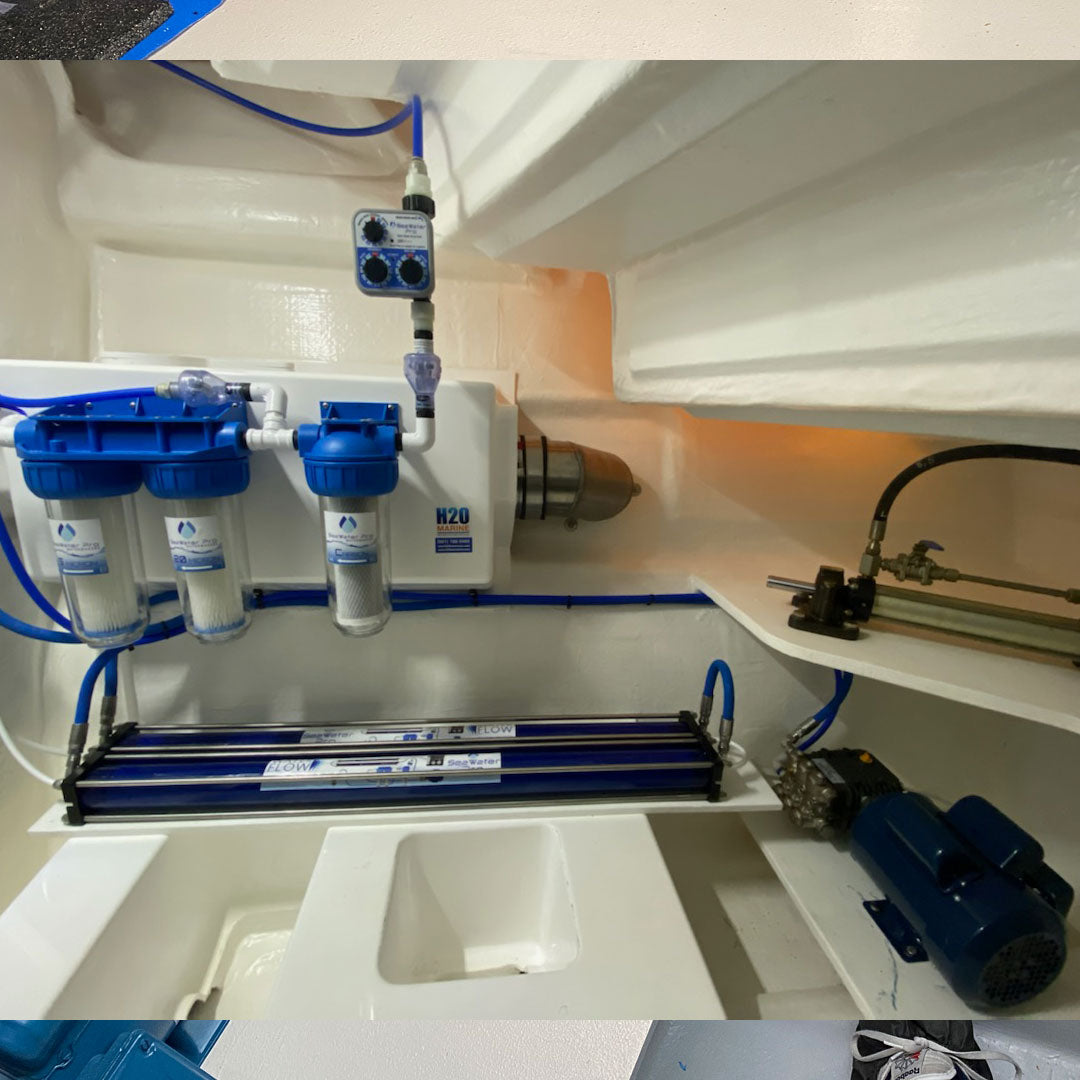
Your Cart is Empty
But your water tank doesn't have to be :)
- Choosing a selection results in a full page refresh.
- Portable and Installed Watermakers
- FIND A DEALER >

- AC Electric
- Petrol (Gasoline)
- 12VDC Electric
- Control Panel
- Autoflush System
- Plumbing Install Kit
- Hydrotester
- Prefilter Cartridge
- Pickling Solution Mix
- Lift Pump Impeller
- RO Membranes
- High Pressure Hose
- Case Studies
- Testimonials
- Applications
- Desalination Theory
- Detailed Schematic
- Dealers List
- Dealers Map
- OEM Partners
- Troubleshooting
- Installation
- Manuals + Downloads
- Sales Enquiry
- Support Request
Rainman Installed Water Maker Options
Why install.
Rainman built our reputation on inventing and commercialising portable watermakers . However, over the years many of our customers prefer to permanently or semi-permanently install their systems into their boat. There are many reasons for this:
- You don’t have to pull the system out on deck every time you use it.
- No hoses thrown over the side of your boat while system is in use.
- Less concern of hoses getting kicked out of place while in use.
- Easier to use while underway.

System Types Available
If you decide to install a Rainman watermaker, you can choose from any of our electric systems. We do not recommend you install our petrol (gasoline) powered watermaker. Options include:
AC powered The primary design principle in the AC Rainman is that it must start and run using a Honda 2kVA portable generator. The ubiquity of this generator has helped make it the most popular system in our range. It can also run on a good quality 2kVA inverter. Higher capacity generators and inverters are commonly used as well.
12VDC powered This system was designed with lower power and lower flow rates. Simplicity and low maintenance is retained by utilising a simple triplex plunger pump.

Two Components – One Watermaker
The system is made up of a pressure supply unit (PSU) and a reverse osmosis unit (RO). Both parts are required to make a complete watermaker. The PSU lifts the seawater, filters out the sediment and puts the system under high pressure, while the RO unit extracts fresh water from the stream of pressurised seawater. Most of the water goes out to waste as brine output, while about 20% of the volume is extracted as fresh potable water for your tanks. Different RO options exist for you to select with your AC Rainman system, each to achieve their own specific objective.

Case or Naked
The system can be purchased either as the traditional blue case version or in the Naked configuration. Both can be easily installed in your boat. The pricing, performance and power consumption are identical between the two options, so your specific requirements control which is best suited for your application. The main differences between the two systems are:
- Naked comes without the blue cases, but includes most of the valves and plumbing components for your installation.
- The valve / gauge control on the reverse osmosis (RO) unit is at the end of a high pressure hose, so the membranes can be installed “out of sight and out of mind”.
Full details on the differences between the case and naked systems can be found on the pages dedicated to our AC watermakers or our 12VDC watermakers .

Types of Installation
Both the case and naked systems can be installed and plumbed in various configurations. Below are high level schematics of four possibilities (click on image for larger view). The core components of the installation are:
- Dedicated or shared through hull for intake of seawater.
- Ability to draw water out of a bucket for flushing or pickling the watermaker. Using our autoflush option means you will rarely, if ever, need the pickling bucket.
- Control product water flow for testing or filling your tank.
- Brine waste water goes overboard.

Easy Mounting System
Often one of the challenges with a watermaker is the physical installation of the system. Rainman has developed a mounting system made of fibreglass reinforced nylon to make this process as easy as possible. Simply screw down the seats with self-tapper screws and the Rainman systems snap into place.
More details can be found in the installation guide , but watermaker installers tell us they can save hours off of each installation.

Plumbing Installation Kit
The Rainman Naked watermaker includes a plumbing kit that is designed to fulfil most of your requirements for your installation. Obviously, every boat is different, so there will be some parts you may need to source yourself. Some of these parts can include a sea strainer, extra 3/4″ hose, and related fittings.
If you plan to fully install your Cased Rainman system, the plumbing kit can be purchased as an option.
More details of what is included in this kit can be found on the accessories page.

Technical Requirements for Installation
While most customers that install their system may have it done professionally, there is no reason you can not tackle the job yourself. The skills required include the use of hand and power tools, cutting in to various water lines, and routing soft plumbing and cabling throughout your vessel.
The installation guide will assist in determining if you wish to do the job yourself.

The optional control panel provides a remote management capability for your installed Rainman watermaker. It’s a highly presentable and functional add-on component that will enhance your Rainman user experience.
It is an injection moulded ASA acrylic panel that remains true to Rainman’s reputation of elegant simplicity.
- Integration with the Rainman autoflush system, triggers flush cycle after powering the watermaker off.
- Built in tri-colour LED salinity sensor indicates when water is good to route to your tank.
- Can be installed flush mounted, standalone with the included enclosure box, or even externally with the optional hatch.
- Simple installation with no high pressure fittings or high voltage wiring.
- Backwards compatible if you already have an installed electric naked or cased Rainman.
More information about the Rainman control panel »

Your Rainman watermaker is a very robust piece of equipment, but caring for certain aspects will prolong its life. Regularly flushing your Rainman with fresh water will maximise the life of your watermaker membranes.
The optional autoflush system incorporates a solid state programmable timer that will flush your Rainman watermaker after each use and every seven days thereafter. It incorporates built in protection if your boat loses power during or between flush cycles.
More information about the Rainman autoflush system »

Maintenance Requirements
While there is limited maintenance on your Rainman watermaker, there are a few things that should be looked after to ensure a long life of your system.
When storing system:
- Fresh water flush and pickle the system when storing it for more than a couple days. This may sound complex, but it is an easy five minute process with no specialist knowledge required. Alternatively, install the autoflush system to avoid the need for manually performing this task.
5-50+ hours of use:
- Change the non-proprietary prefilter after 5-50+ hours of us, depending on cleanliness of the source water.
- Change non-proprietary impeller in the lift pump after a year or two, depending on use.
- Change the high pressure pump oil each 300 hours of use, using SAE-30 weight oil.
5-10 years:
- Change the non-proprietary sized reverse osmosis membranes after 5-10 years.
- If your system starts losing performance, the non-proprietary pump seals may eventually require replacing.
Spares and Consumables
Your new Rainman system will arrive with enough spares and consumables to keep you going for a while, so most customers do not need to order more with initial purchase. There are a variety of items you will need over time to keep your system running for many years.
Rainman Watermaker spare parts and consumables »
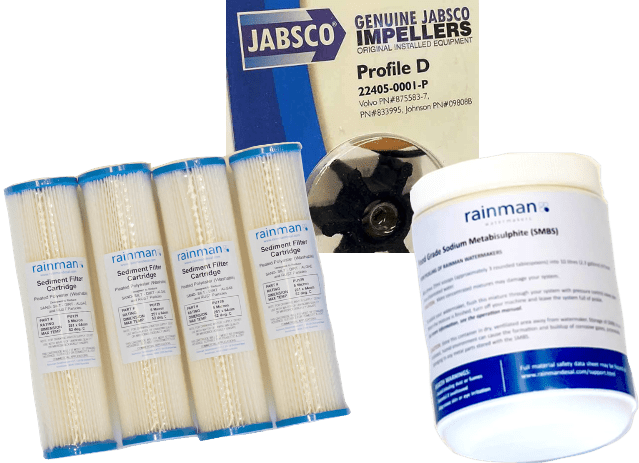

IMAGES
VIDEO
COMMENTS
Spectra Katadyn PowerSurvivor. As a compact and energy-efficient watermaker, the Spectra Katadyn PowerSurvivor is arguably the most affordable watermaker currently available on the market. We are talking about a model that only requires 4 amps to desalinate water for your sailboat.
The best sailboat watermakers for liveaboards. The Rainman naked 12V watermaker is a great option for anyone looking for a compact, efficient way to produce fresh water. The unit is simple to set up and use, and it produces up to 30 litres of fresh water per hour for a smaller unit, or up to 140 litres per hour for a larger one.
Rainman Watermakers are a compact system designed to generate a fresh potable water supply from seawater. They can be installed in a minimum footprint configuration or kept portable for maximum flexibility. We use only top quality components in the build process from the best manufacturers: Honda, General Pump, Filmtec, and Noshok. Our filters ...
Welcome to SeaWater Pro, the premier provider of high-quality watermakers for boats and portable watermakers for all your marine adventures. Our cutting-edge technology and reliable products will ensure that you have access to clean, purified seawater wherever you go. With our easy-to-use and reliable watermakers, you can say goodbye to bulky storage tanks or worry about running out of fresh ...
1. Katadyn Power Survivor 40E Watermaker Desalinator. Small yet powerful, the Katadyn Power Survivor 40E is a reliable workhorse designed for boats with a small crew population of 2 to 3. This modular unit provides 1.5 gallons of water per hour, and draws only 4 amps from a 12-volt system, making it one of the most energy efficient desalinators ...
Put the intake hose into seawater. Put the green waste brine hose overboard. Turn the system on. Slowly pressurise the system to 55 bar (800 psi) using the control valve. Fresh water will begin coming out of the white product water hose. Let it run for a short period of time, then put it in your tank.
Since all of the watermakers that are currently available for cruising sailboats use this process for desalination, the major differences between the systems are how you power the high-pressure pump and the user interface. Powering options include 120/220-volt AC, 12- or 24-volt DC and engine/belt driven. All have their pros and cons.
The Rainman Watermaker portable configuration comes ready to go right out of the box. With set up of your portable desalination taking as little as 10 minutes, you can benefit right away from a fully functional, and extremely robust portable desalination system without the cost and downtime of complex installations. ... Haul out boats for ...
A boat water maker can make water-intensive luxuries like freshwater deck washdown, freshwater flushing heads, laundry, daily showers, and even baths, a possibility. ... If you race, have multiple boats, or plan on selling your boat, a portable watermaker is a great option because it can be easily moved from boat to boat. If we were to buy ...
a technician to your boat • Keep system when upgrading boats • Loan it to a friend • Avoid expensive and invasive installation process • Fill your neighbour's tanks with extension hose • Use system on RV or second boat • Ease of resale 2021 brochure_A4toA5_8pages.indd 3 9/8/21 1:24 pm www.rainmandesal.com Independence
It's also important to choose a reliable and reputable brand like ECHOTec Watermakers with a good track record of customer support and service. Some of our most popular options for sailboat watermakers include the following: 12/24v DC Economy Watermakers. 12 - 180v DC Watermakers. Belt-Driven DC Watermakers (Modular)
Marine Watermakers. Schenker watermakers are simple, quiet, compact, efficient and fully automatic. A Schenker watermaker will allow you - whether you own a yacht, a sail boat or any vessel - to extend your cruising duration and increase your independency from marinas, thus enjoying more time at sea. Schenker's three-years warranty is ...
The Ultra Whisper. The Ultra Whisper by Sea Recovery is best for small boats and sailboats, this super low power machine is specifically engineered for boaters with limited electrical options and can run on either AC or DC power, boasting a 75% reduction in power consumption over other models. It's also very quiet (hence its name)so it won ...
Our portable watermaker is compact and easy to use, making it a must-have for any water enthusiast, traveler, or emergency preparedness kit. Say goodbye to lugging around heavy water bottles and hello to unlimited freshwater supply with our easy-to-use and reliable portable desalination systems. Don't wait until a problem escalates, invest in ...
The ideal watermaker should provide the daily fresh water demand of the boat in about 3-4 working hours. On his turn, the daily fresh water demand is based on the number of people onboard and the type of boat. The typical fresh water demand in a sailing boat if about 30-40 lit/day, whereas it is 50 -60 lit/h in a power boat or catamaran.
In terms of installation, the kinds of watermakers that work best with the typical small or mid-size cruising sailboat are those that are fully modular—i.e., in which the filters, strainers, pumps and semi-permeable membrane are all installed separately in whatever kind of an arrangement suits your boat best.
SeaWater Pro is proud to introduce our new portable watermaker. A revolutionary device designed from the ground up. Based on our larger SeaWater Pro modular desalinator, the portable watermaker is constructed of the highest quality. Designed for durability and maximum portability. This is the ideal device for not just boaters but anyone who wants to filter or desalinate water on the go.
Last Updated by Daniel Wade, October 1, 2021With the right Watermaker, the ocean becomes an almost immeasurable supply of fresh and clean drinking water to keep you hydrated during your offshore sailing adventures.Many sailors do spend a lot of their time and money on various parts of the sailboat including the sails, engine, electronics, and generators especially when preparing for long ...
SeaWater Pro Mini lithium powered portable watermaker: Filter/desalinates water at 10 GPH. Lithium battery fresh watermaker model charges in 3 hrs., runs 3.5 hrs. and weighs 45lbs. ... Prepping your Boat for Hurricane Season with SeaWater Pro Read more; Contact 3233 SW 2nd Ave. Suite #200 . Fort Lauderdale, FL 33315. Main: (954) 800-8800 ...
Overview. The 12VDC system is the Rainman watermaker that consumes the least power. It's a very simple and highly reliable system that can make up to 34 litres (9 gallons) of fresh potable water per hour. Options exist for this system to be run completely portable without any plumbing or fully plumbed in with a minimum footprint installation.
Mini SeaWater Pro AC powered portable watermaker: The Standard AC 110 Volts model makes 14 GPH. This easy-to-use system comes in a hard shell, splash resistant case, and can purify freshwater or desalinate seawater. ... Prepping your Boat for Hurricane Season with SeaWater Pro Read more; Contact 3233 SW 2nd Ave. Suite #200 . Fort Lauderdale, FL ...
Fitting: 15mm to 1/2 Inch OD Fitting (1) $25.00. SeaWater Pro, expertise lies in designing, manufacturing, and selling portable water desalinators, also known as water makers, in various sizes ranging from 17 gallons per hour to 40 gallons per hour. Business is located in Fort Lauderdale, FL.
5-50+ hours of use: Change the non-proprietary prefilter after 5-50+ hours of us, depending on cleanliness of the source water. 1-2 years: Change non-proprietary impeller in the lift pump after a year or two, depending on use. Change the high pressure pump oil each 300 hours of use, using SAE-30 weight oil.